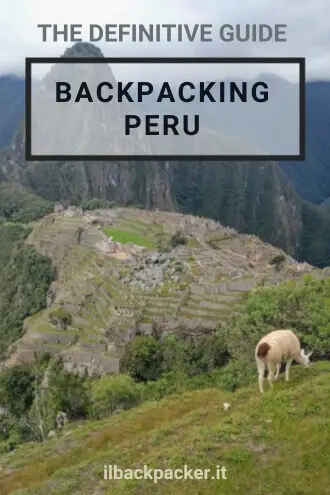Peru Travel Guide
Many people know Peru only for Machu Picchu, but in reality, there is so much more to explore.
Similar to Thailand in Southeast Asia, Peru has been South America’s top tourist destination for years. As a result, many destinations are quite crowded and, in some cases, have become tourist traps. However, many other places remain uncrowded yet equally fascinating.
I traveled across Peru from north to south. Below, you will find a lot of useful information for planning a backpacking trip.
Quick menu
- When to visit Peru
- Documents and vaccinations to enter Peru
- What to do and see in Peru
- Possible itineraries Peru
- How to get around Peru
- Backpacking Peru: costs
- Backpacking Peru: safety
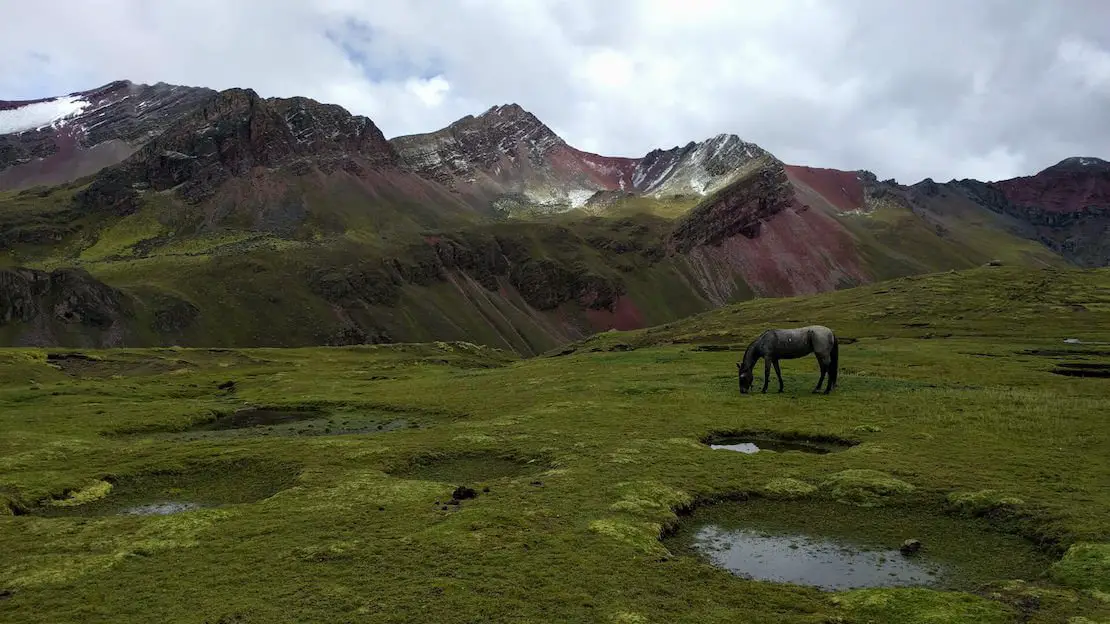
Along the path leading to the Rainbow Mountains.
When to visit Peru
Determining the best time to visit Peru is not easy, as the climate varies significantly throughout the country.
Along the desert coast, it is extremely hot from December to March, especially in the north of the country, while temperatures are more pleasant from April to November.
In the Andes, the rainy season lasts from December to March, while the dry season spans from June to September. The climate in the Amazon rainforest follows a similar pattern but with more frequent rainfall and a hot, humid climate year-round.
Essentially, you can visit the country throughout the year without major issues. However, if you plan to do a lot of trekking, the dry season is undoubtedly the best time to visit Peru.

Trekking to Churup Lagoon during the rainy season.
Documents and vaccinations to enter Peru
Most passport holders (with an expiration of less than 6 months) receive a 90-day tourist visa upon entering the country. It is possible to renew the visa by leaving the country and re-entering the same day, as long as you do not exceed 183 days per calendar year.
I haven’t personally experienced this, but from what I’ve read, the 183-day rule is not always strictly enforced and can depend on the border officer. For more information, refer to the official website.
Note that proof of exit within the limits of one’s visa is required when entering the country. This is not a problem for those with a return flight or a flight to another country, but it could be for those with a one-way ticket and plans to leave Peru by land or sea without having a definite date or booked tickets. Checks are at the discretion of the border officer. For example, I was not asked for anything, but I met a couple of people who were asked for proof of exit. Check out this article to learn more.
Peru does not require any mandatory vaccinations, but Hepatitis A, Hepatitis B, and yellow fever are recommended, especially if you decide to visit the Amazon rainforest.
What to do and see in Peru
As you can see from the map, the main tourist attractions, or at least the best-known ones, are all located south of Lima. This is advantageous, especially for those who do not have much time. However, for those with more time, I highly recommend visiting the northern part of the country as well. Now, let’s explore what each destination has to offer.
I will often mention prices in Soles, sometimes abbreviated to “Sol”. The exchange rate, at the time of publication of this article, is 1€ = 4.11 SOL. For the current exchange rate, I suggest you check online.
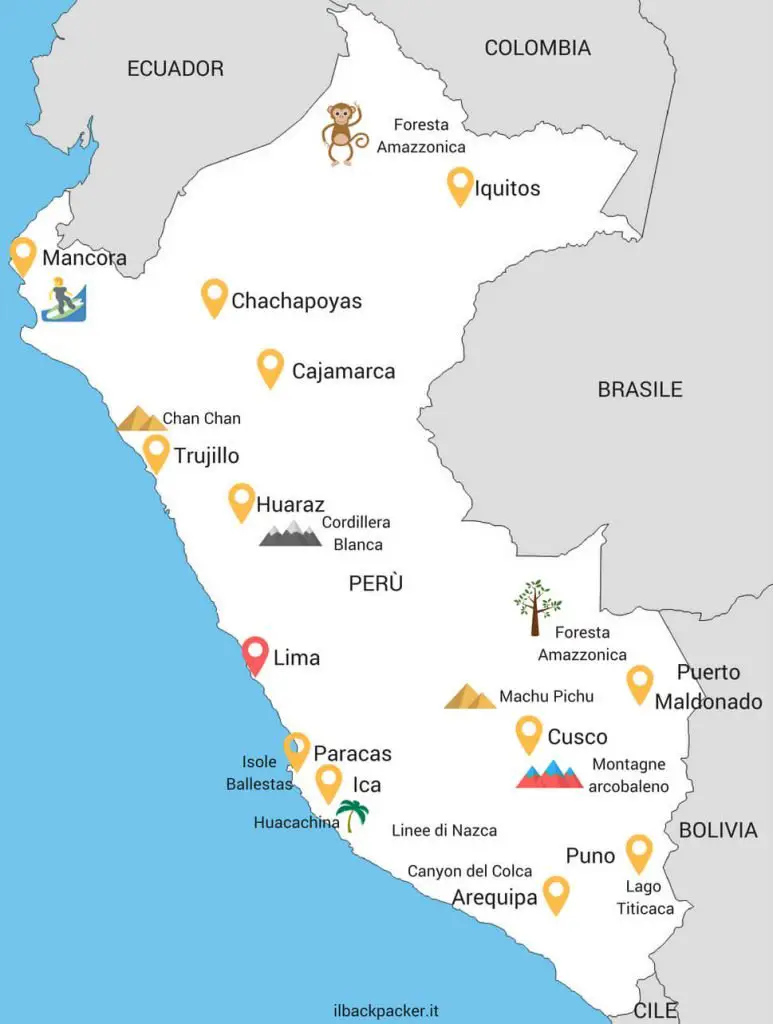
N.b. Several times throughout the guide you will find links to https://www.alltrails.com/. If you want to use offline navigation directly from the Alltrails app you need to upgrade to the pro version. However, you can get around this by downloading the coordinates from the desktop version of the site in “Google Earth KML” format and then uploading them to Organic Maps, which is by far one of my favorite travel apps.
Lima
Lima is Peru’s capital and largest city. Founded in 1535 by Francisco Pizarro, it served as the center of power for the colonial empire for about 300 years. As a result, the city is rich in churches, monasteries, and historical buildings.
What to do and see in Lima
Visit the historic center
Plaza de Armas also known as Plaza Mayor (Google Maps) is located in the heart of the historic center and has been a UNESCO protected site since 1988, all around you will find the main historic buildings of the city. On the north side of the square is the government palace (Google Maps), which is also the official residence of the Peruvian president. At noon you can watch the changing of the guard.
To the southeast stands the Cathedral of Lima (Google Maps), site of Pizarro’s remains. I recommend staying at 1900 backpacker, which in addition to being a great hostel, provides a free tour of the historic center that will take you from the main square to see lots of other interesting sights.
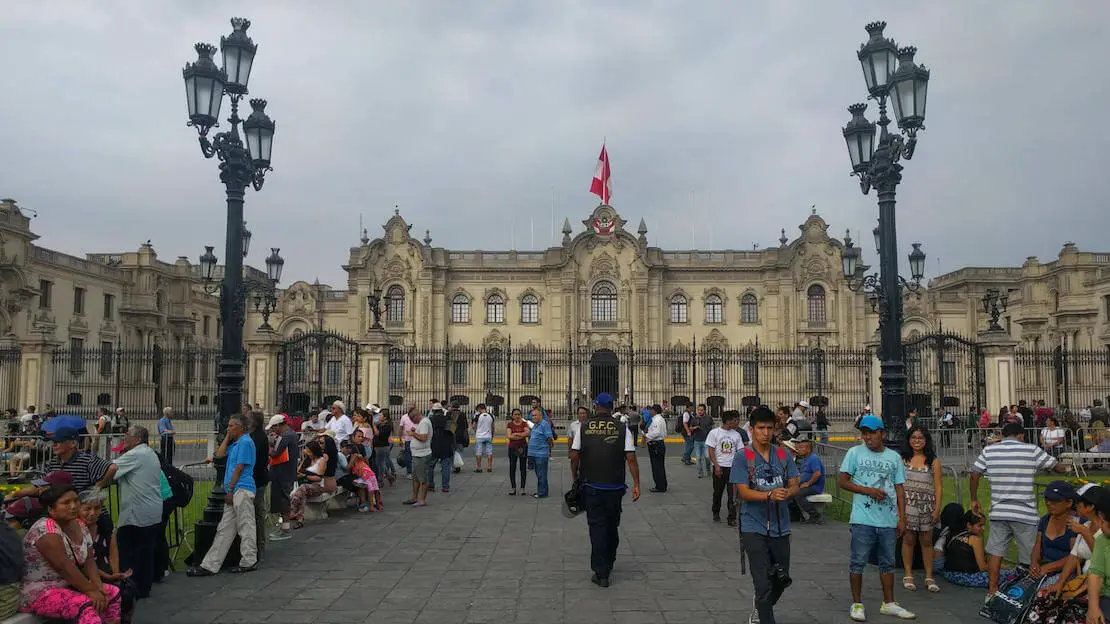
Government Palace.
Miraflores
Miraflore is the “fancy” neighborhood of the city. Here the atmosphere is very European and you will find all the trendy places in the city. In the center of the neighborhood is Parque Kennedy (Google Maps). While moving to the coast you will find the famous waterfront where you can stroll and visit Parque del Amor (Google Maps) where there are many modern sculptures and mosaics.
Parque de la Reserva
The park has existed since 1920 but it was not until 2007 that the Lima City Council completed work to create El Circuito Mágico del Agua (Google Maps) within it, a set of 13 fountains, many of them interactive, that holds the world record for the largest fountain complex in the World.
There are 3 shows a day during which light plays are created accompanied by music in the main fountain. I strongly recommend the visit. To confirm times and purchase a ticket, you can consult the official website.
The park is open Tuesday through Sunday from 3:00 pm to 10:30 pm.
Performances are at 7:15 pm, 8:15 pm and 9:30 pm.
Admission costs only 5 soles.
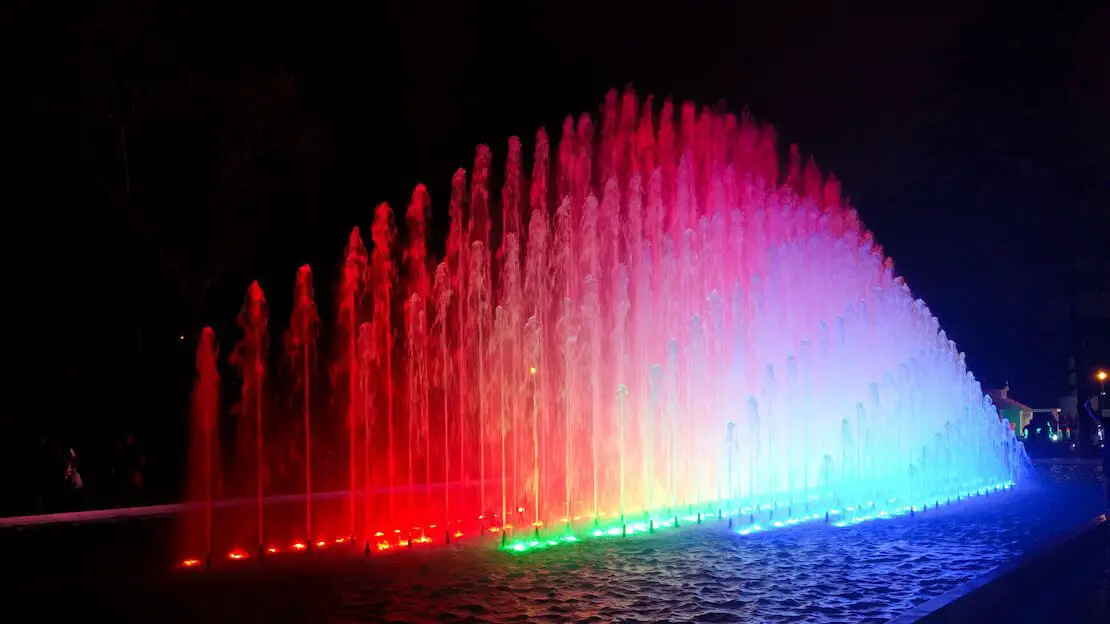
Parque de la Reserva, Lima.
Where to sleep in Lima?
The two main areas where most people stay are the historic center and Miraflores. In the historic center I recommend 1900 backpacker, the hostel, housed inside a colonial building. It is really nice and clean. For those looking for a more party environment Miraflores is probably a better choice.
All destinations south of Lima
Paracas
This small town south of Lima may not offer much in terms of tourism, but it is an excellent base for exploring the nearby Ballestas Islands and the national reserve of the same name. In this arid area, you can find 74 species of plants, 216 species of birds, 16 species of mammals, 10 species of reptiles, and 193 species of fish. It is considered one of the world’s richest ecosystems, which is quite impressive.
What to do what to do and see Paracas
Consider joining a tour to the nearby Ballestas Islands (about 30/35 soles), where you can see various animal species, including penguins and sea lions. Tours last about two hours and leave at 8:00 am. Paracas National Reserve entry fee is 11 soles and there is also a port tax of 5 soles.
You can also explore the Paracas Peninsula with a tour or on your own by renting a bike (around 30 soles). However, be aware that depending on the time of the year, the strong winds and high temperatures can make this challenging.
While La Catedral (Google Maps), Yumaque (Google Maps), Playa Roja (Google Maps), and Playa Las Minas (Google Maps) are must-see attractions, the entire 30-kilometer path offers breathtaking views. You could also consider stopping at Archeological Museum de Sitio Julio C. Tello de Paracas (Google Maps). In any case, take your time to savor the incredible landscapes along the way. After visiting Playa Las Minas just head back to Paracas. If you want, some agencies combine the boat tour with the Paracas Peninsula in one single tour.
Finally, i have not been there but there is a quite impressive archeological site not too far from Paracas named Tambo Colorado (Google Maps). To get there, you should be able to get a colectivo from Pisco.
How to reach Paracas?
Nearly all buses going to Ica, Nazca, and Arequipa will drop you off along the Panamericana without entering the village. From here you can reach the village center by taxi or by taking one of the local collectivos. Only a few companies like Cruz del Sur, Peru Bus and Peru Hop actually go to Paracas itself.
Where to sleep in Paracas?
Paracas Backpackers House is a great hotel that offers both dormitory and private rooms and has a decent kitchen. Really good value for money.
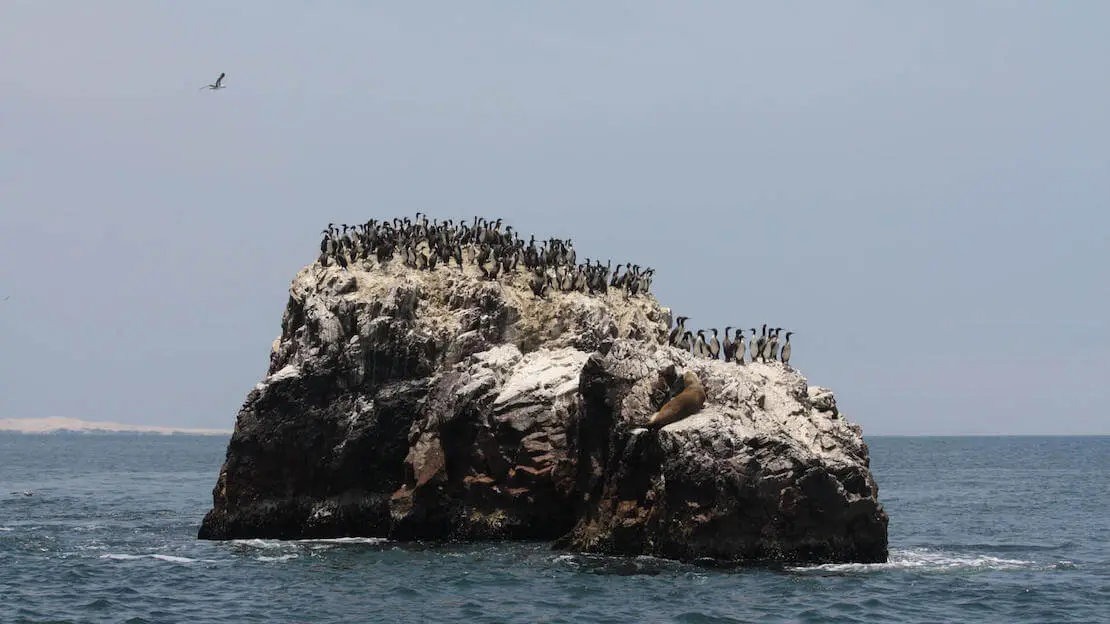
Ballestas islands.
Ica
Ica is about 4-5 hours from Lima and 2-3 hours from Nazca, the only reason to reach this town is the nearby oasis of Huacachina, which is a few kilometers from the city.
Huacachina
The small “village”—actually a cluster of hotels and restaurants around a small lagoon surrounded by sand dunes—can be considered a classic tourist trap. Everything here is much more expensive than in the rest of Peru, and the oasis itself would have dried up years ago if water were not regularly pumped into the lagoon to keep businesses running.
That said, I still recommend a quick visit to participate in the dune buggy tour that includes sandboarding. Racing through the dunes in the dune buggies is like riding a roller coaster, and sandboarding is the equivalent of snowboarding on sand. The whole experience is extremely fun and definitely worth the visit.
The tour is advertised everywhere and should cost about 50 soles, including the 3.80 soles fee to be paid to the municipality. I recommend joining the afternoon tour so you can witness the sunset.
How to reach Huacachina?
Ica is a fairly large town and is accessible from all major cities in the area. Once in Ica, there is no public transportation to Huacachina. The Ica-Huacachina route costs about 10 soles by taxi and 5 soles by tuk-tuk. Peru Hop is the only bus company that has a stop in Huacachina.
Where to sleep in Huacachina?
Desert Nights Hostel is a good hostel. Good value for money.
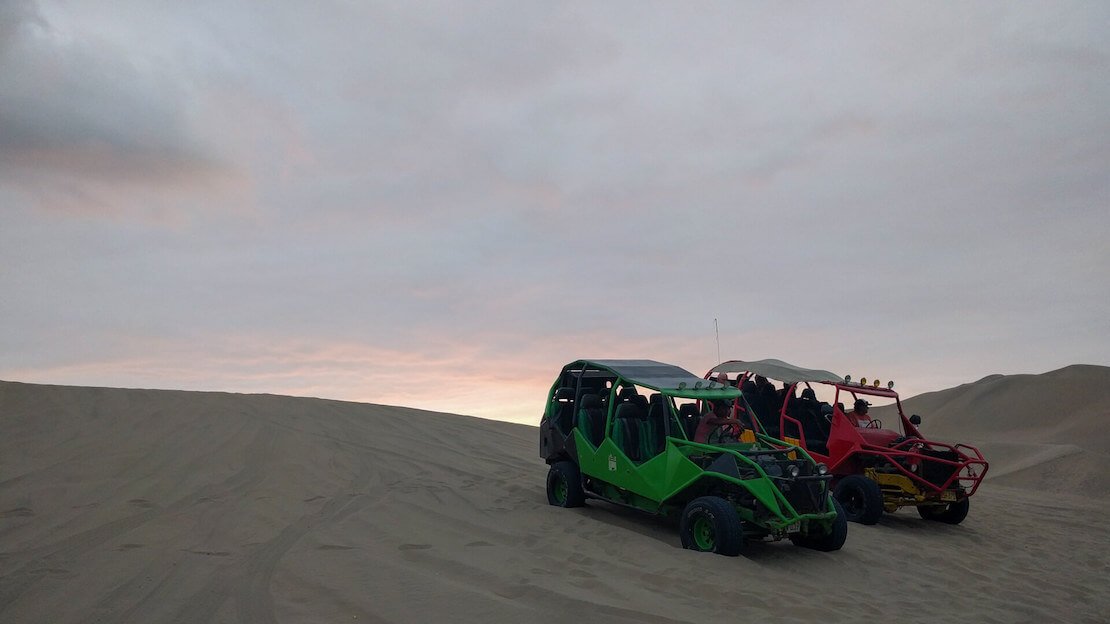
Sandboarding tour.
Nazca
Nazca is a town in southern Peru famous for the “Nazca Lines,” a series of geometric figures and giant animal drawings carved into the desert over an area of more than 500 square kilometers. The best way to admire them is via a flight, which is relatively expensive for backpackers. Many people, myself included, skip Nazca altogether. From what I have read and heard, the flights cost about $70 to $100 for approximately half an hour. The cheaper alternative, visiting an observation tower, doesn’t make much sense given the large size of these drawings.
You can find a detailed guide about Nazca and other sites of interest in the surrounding area on this page.
How to reach Nazca?
Numerous collectivos leave to and from Ica; it is about 2-3 hours. From Cusco (14 hours) and Arequipa (9 hours) there are numerous night buses while from Lima it is about 7 hours.
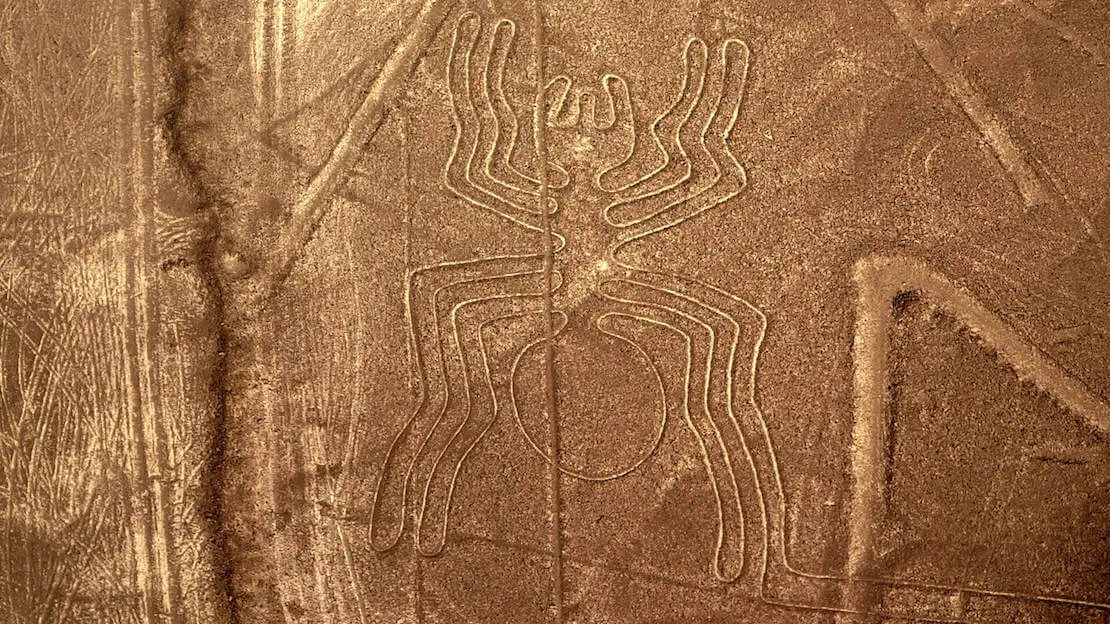
Nazca lines.
Cusco
Cusco is a beautiful city that preserves numerous colonial buildings and remnants of a much older history, having once been the capital of the Inca empire and remaining the cultural center of the Quechua community. Simply strolling through its streets allows you to witness the “layers” of its history. It’s common to see colonial buildings constructed directly atop foundations dating back to the Inca era.
Moreover, Cusco serves as an ideal base for exploring Machu Picchu, the Sacred Valley, and the Rainbow Mountains.
N.B. Cusco is at 3400m altitude so altitude sickness can be a problem.
What to do and see in Cusco
Visit the historic center
The historic center of Cusco is truly charming, and it’s definitely worthwhile to spend at least half a day exploring the city streets. The Plaza de Armas (Google Maps) serves as the main square, here you can visit Cusco Cathedral (Google Maps) and the Church of the Society of Jesus that charges an entrance fee of 10 soles but offers some nice views over the square (Google Maps).
The Plaza de San Francisco and its surroundings are also quite nice to visit (Google Maps).Here you can visit the Museo y Catacumbas del Convento de San Francisco de Asís de Cusco, which requires a guide. The entrance fee is 20 soles (Google Maps).
I, as always, recommend joining the free walking tour.

Plaza de Armas, Cusco.
DIY sacred valley
There are many archaeological sites around Cusco. For those interested it is possible to pay for a “Boleto Turístico” costing 130 soles (30-35€) that gives access to 16 sites for a period of 10 days. For students the cost is 70 soles.
It is also recently possible to buy a partial Boleto Turístico valid for one day that gives access to the 4 sites closest to Cusco: Sacsayhuaman, Q’enqo, Tambomachay and Pukapukara. The cost is 70 soles.
You can buy the Bolete Turistico at the office located at 103 Avenida del Sol (Google Maps). Only cash.
What follows is a do-it-yourself mini-tour to visit the 4 sites to which the partial tourist boletus gives access plus two more free ones in the surrounding area.
N.B. I strongly recommend downloading Organic Maps on your smartphone, as all the mentioned places and many of the trails are marked. The area is not dangerous, but without GPS, you could end up going around in circles for quite a while.
Cusco -> Tambomachay/Pukapukara
Take a direct bus to Pisac and ask to get off at Tambomachay (Google Maps). The station is on Calle Puputi (Google Maps) but you may be able to get on somewhere else depending on the location of your accommodation (ask at the front desk). The alternative is to take a taxi, the Cusco – Tambomachay route should not cost more than 20 Soles, if shared it is not that bad. Pukapukara is 300 meters away (Google Maps).
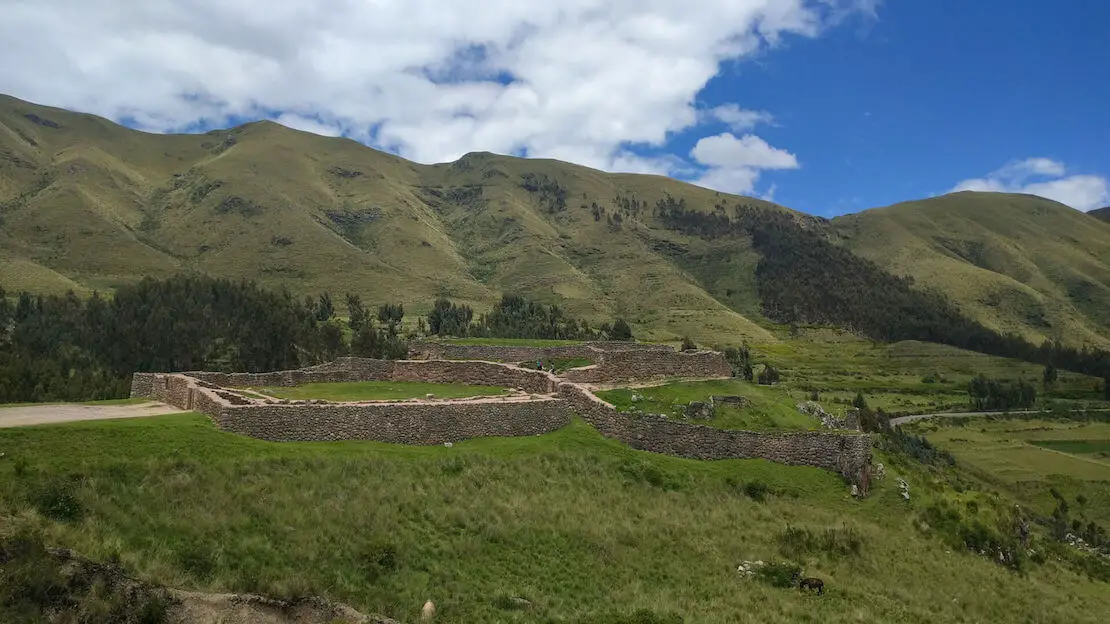
Pukapukara.
Pukapukara -> Temple of the Moon
Once you finish exploring Pukapukara and walk towards Cusco for about 600 meters, you will see a path on the left just before the village of Huayllarocha. Take this path. You will pass a soccer field and continue through eucalyptus trees. From here, the trail is not easy to follow, but with the help of organic maps, you should be able to find your way to the Temple of the Moon without difficulty (Google Maps).
This site does not require a tourist boletus for access.
Moon Temple -> Monkey Temple
Leaving the Moon Temple on your right, follow the path toward the houses and then continue between the two stone walls. After a short while you will arrive at the Templo de los monos (Google Maps).
This site does not require a tourist boletus for access.
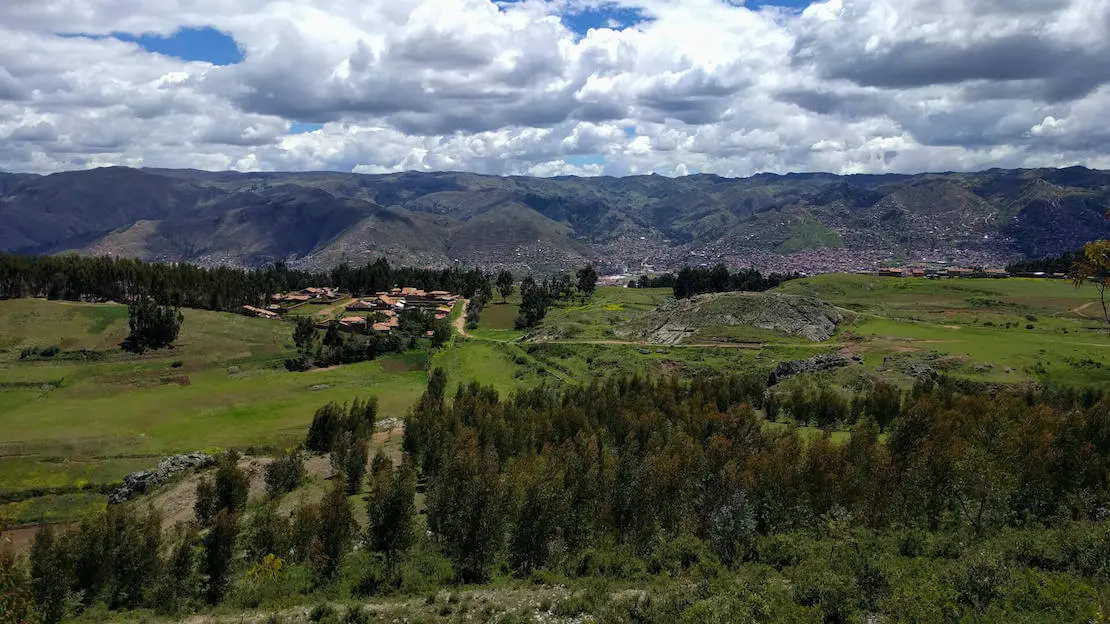
Temple of the moon.
Monkey Temple-> Q’Enqo
Get back on the path you just took and continue for about 15 minutes to the main road. Cross the road and continue along a less-traveled path. At this point, you can go back up the hill and enter Q’Enqo through a side entrance (or attempt to if you don’t have a Boleto Turístico. I was told that it is often possible to enter without problems, but I trusted a small group of children at the trailhead who advised against it). The alternative is to continue straight ahead until you reach an expanse of grass and “ruins” at the foot of Q’Enqo (Google Maps).
Q’Enqo -> Sacsayhuaman
Continue on the main road for about 20 minutes until you reach the White Christ (Google Maps). From there, past the stalls, you will find a series of paths leading to Sacsayhuaman (Google Maps). This is a secondary entry point, and you may be able to enter without the Boleto Turístico. If not, you can still enjoy the view of Cusco and Sacsayhuaman from above.
Inside the site, there is a staircase that leads directly to Plaza de Armas. If you don’t enter the site, go back to the main road and walk to Cusco.
To conclude, two other popular destinations in the Sacred Valley are Moray and Maras from where you have access to the famous salt flats, for the former site you need to have the Boleto Turistico while for the salt flats you can simply pay the entrance fee which costs 10 soles. The tour is offered almost everywhere but you can save money by using public transportation by following the instructions on this page.
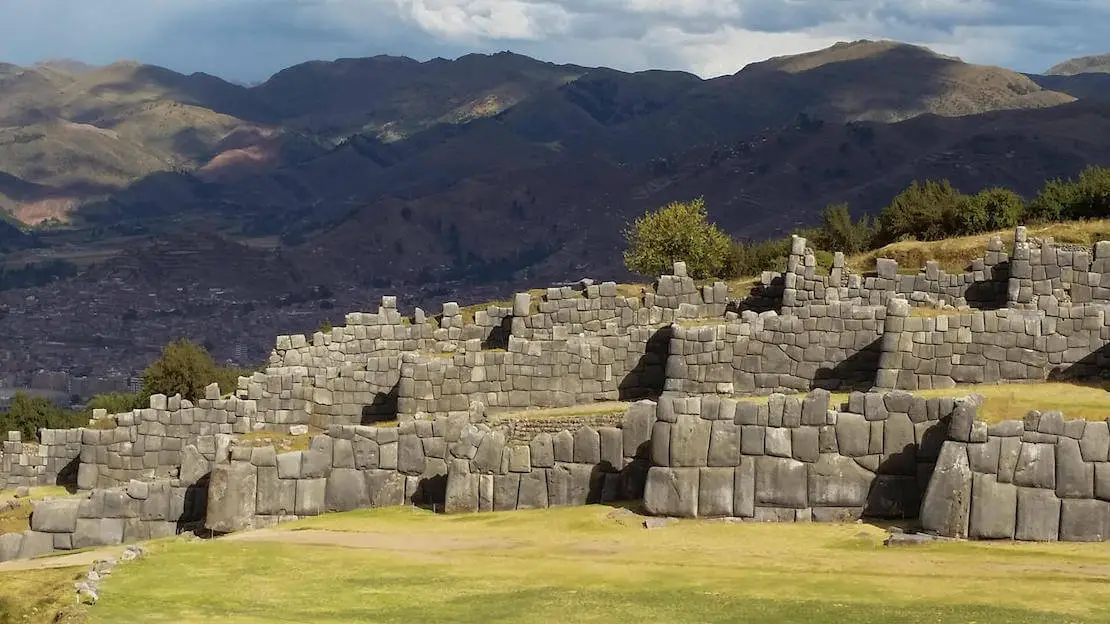
Sacsayhuaman.
Machu Picchu
Machu Picchu can be reached in various ways, from the very expensive Inca Trail (which costs a minimum of €500 and must be booked months in advance) to the Salkantay Trek, which costs around €250 all-inclusive for 4 nights and 5 days. The Salkantay Trek has been recommended to me by many as a good deal. Another option is the Jungle Trek, a 4-day, 3-night trek/activity that includes zip-lining, mountain biking, and rafting for about €200 all-inclusive, which is quite reasonable. Either way, if you want to save money, do not book online, just shop around once you are in Cusco. Here you can find a detailed guide about the Salkantay Trek. FYI, the Salkantay trek can also be done independently, here you find a good guide. Here you can find one about the Jungle trek.
Before discussing the absolute cheapest option, it’s worth mentioning the hyper-mega expensive train (considering we are in Peru) that reaches Aguas Calientes (the village at the base of Machu Picchu) from Cusco or Ollantaytambo. For the Cusco-Aguas Calientes route, tickets start at a minimum of €50 for a one-way ticket and can go up to almost €500 for the luxurious train. The journey takes about 3 hours. If you are interested, you can find more information on their website.
N.B. As of July 1, 2017, access to the ruins in addition to being limited in number is also divided into two time slots 6:00 a.m.-12:00 p.m. and 12:00 p.m.-5:30 p.m. You can buy the ticket at the culture office in Cusco (Google Maps) or in Aguas Caliente (Google Maps) or through the official website (the website sucks but here you can find a great guide with lots of screenshots guiding you through the process), any other site/agency will charge you a fee. Especially during the high season (June-September) it is advisable to buy your ticket a few days in advance. Access to the ruins alone costs 152S (77S for students with ISIC card), if you want to climb one of the two peaks overlooking the ruins (Montaña and Huayna Picchu) the price is 200S. Remember to bring your passport with you. Prices seem to increase every year.
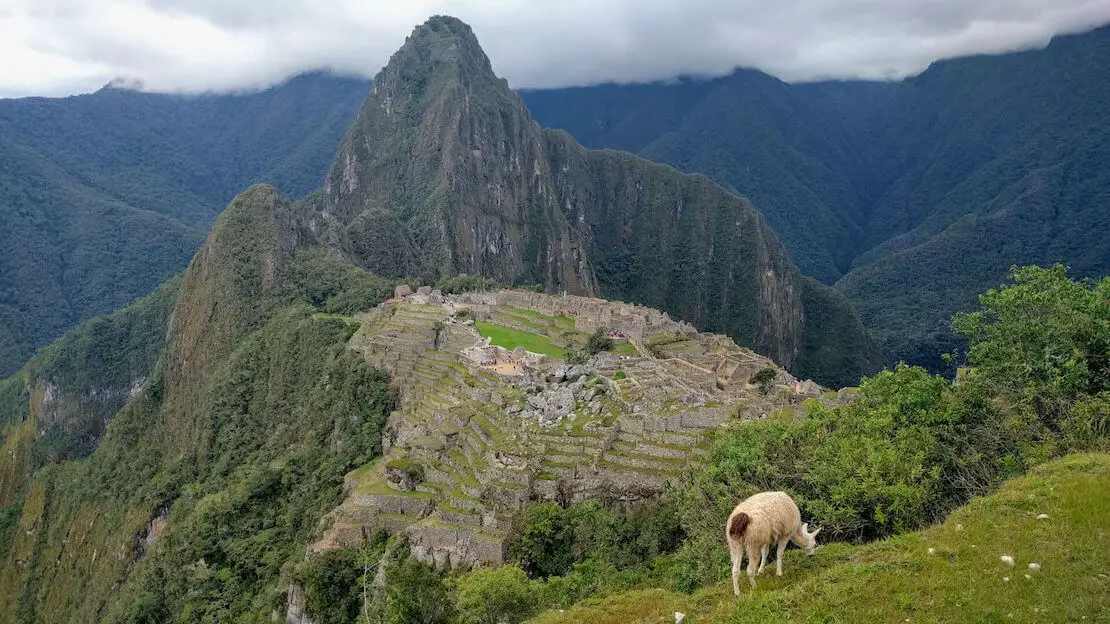
Machu Picchu.
Machu Picchu DIY
Day 1 Cusco -> Hidroelectrica (35-40 soles, 6-7 hours)
In Cusco any agency can offer you transportation from Cusco to Aguas Caliente for 35-40 Soles. They may start higher but you should have no problem negotiating.
The road is really scenic in places and the minibusses are generally comfortable and air-conditioned. The only thing is that there is a mountain pass at about 4,000 meters to cross and the road has a lot of curves so those suffering from motion sickness might have some problems!
Day 1 Hidroeléctrica -> Aguas Caliente (walking, 2-3 hours) All Trails
Upon arriving in Hidroelectrica, the walk along the train tracks to Aguas Calientes is pleasant and entirely flat, taking about 2-3 hours at most. Plan to spend the night in Aguas Calientes. Although booking sites like Booking.com and Hostelworld may give the impression that cheap options are limited, this is not the case. There are literally hundreds of options that do not appear online. Despite everything being more expensive than in the rest of Peru, you only have to cross the river/stream that divides the town to see prices drop significantly.
There isn’t much to do in Aguas Calientes, but you will need to wake up early the next day and will probably be tired from the long journey.
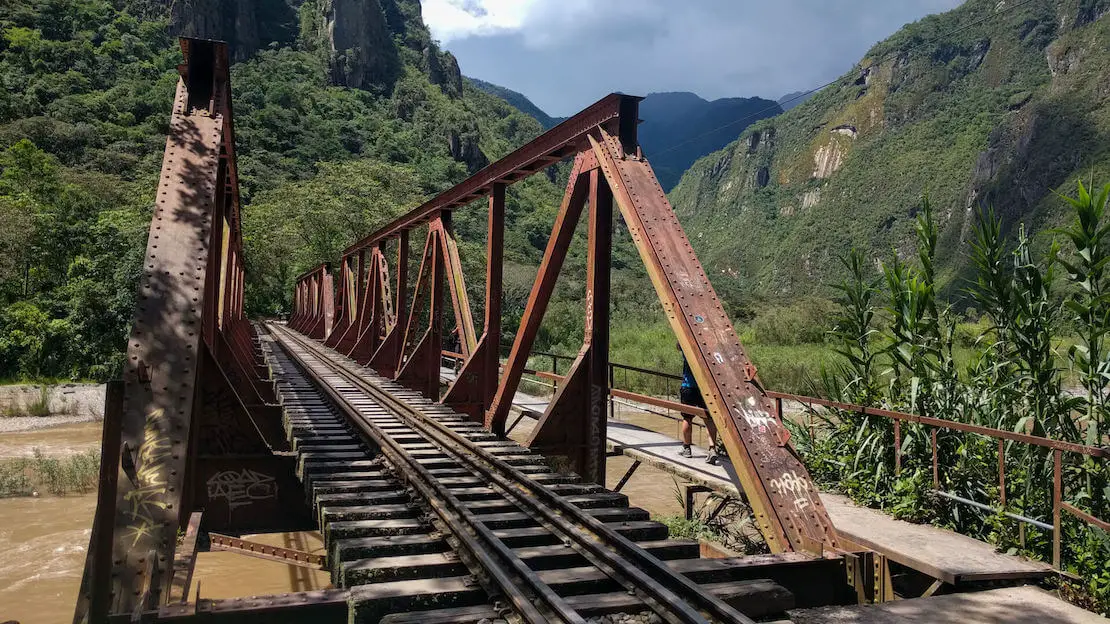
The walk along the train tracks.
Day 2 Aguas Caliente -> Machu Picchu All Trails By now you should have your ticket to enter the site (I recommend the morning shift). To reach the ruins from Aguas Caliente there are two options:- Walk for about an hour/an hour and a half (the elevation gain is about 400 meters, nothing strenuous but not an easy walk either). Try to leave Aguas Caliente around 4:30/5 am so that you will be at the entrance as soon as they open the gates. Here you will find a map just to get an idea although getting lost is practically impossible given the number of people you will find on the street.
- After the most expensive train in South America, there is also the option of taking the most expensive bus (excuse the irony but I hate when people/government take such shameless advantages). The price is $24 for a round-trip ticket and travel time is about 20 minutes. The first bus leaves Aguas Caliente at 5:30 am but there will be a line from 4:30 am. If you decide to take this bus, I strongly recommend buying your ticket the day before.

Machu Picchu visto dalla Porta del Sole.
Day 2 Machu Picchu -> Hidroelectrica -> Cusco
Enjoy the site until 12:00 noon when, in any case, you will be forced to leave. Go down following the trail you took in the morning and then head to Hidroelectrica ideally without returning to Aguas Caliente so you save time. The last vans back to Cusco tend to leave around 2:30/3 so you should have no problem with the timing. Once back in Cusco you will probably be exhausted but spending another night in Aguas Caliente doesn’t make much sense in my opinion.
Certainly, Machu Picchu can be reached and explored in numerous ways, catering to various preferences and budgets. However, the method just described is the most economical way to experience it.
N.B. Inside the site you are theoretically not allowed to eat (um ok..) but literally everyone does so you should have no problem bringing your own packed lunch. There is an extremely inexpensive local market in downtown Aguas Caliente where you can stock up on fruits, vegetables, etc.
The last option I want to mention is to stop at Ollantaytambo starting from Cusco, this is the colectivo station (Google Maps). In addition to the fortress (Google Maps) for which you need the Boleto Turístico there is another interesting free site from where you have a great view of the fortress itself (Google Maps). The next day take a collectivo to Hidroelectrica from the main plaza and then do what has just been described.
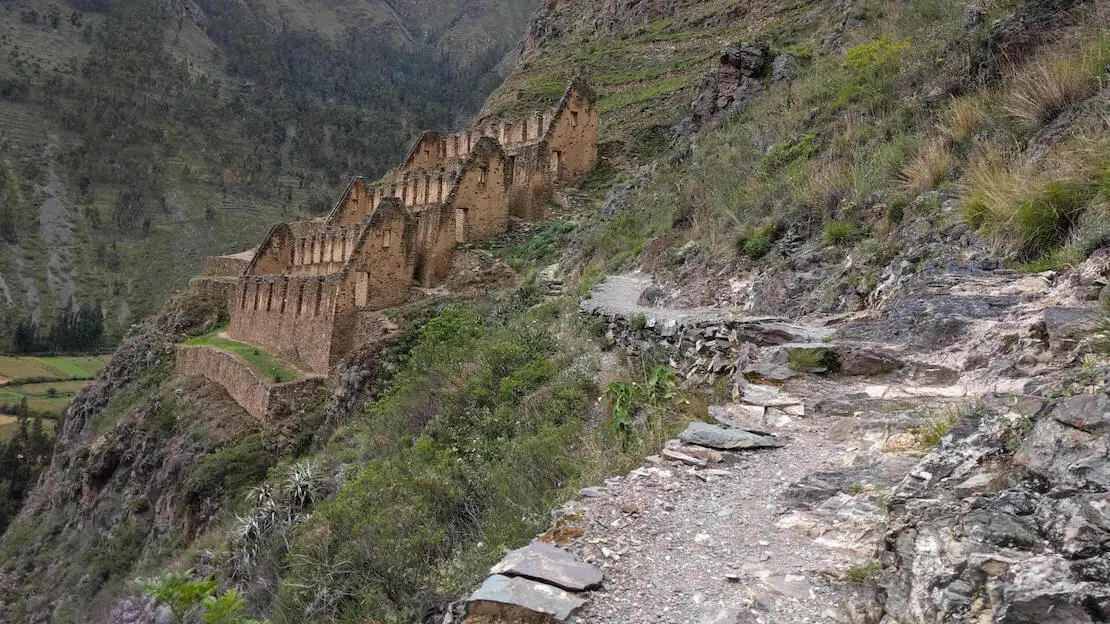
Ollantaytambo.
Rainbow Mountains (Vinicunca)
The Rainbow Mountains are a natural spectacle that was relatively unknown until a few years ago. They can be visited as part of the Ausangate Trek, but many, including myself, opt for a day trip from Cusco.
The easiest and surprisingly cheapest way to visit is through an organized tour. While it’s possible to reach the trailhead using collectivos and taxis, it ends up costing about the same while taking much more time.
Being budget-conscious, I visited at least 10 different agencies until I found one offering transportation alone for 35 soles, which is very reasonable. Alternatively, you can opt for the complete package including transportation, breakfast, and lunch starting from 60-70 soles.
There is also a community fee of 10 soles to be paid upon arrival.
From the starting point to the famous photo spot, if you’re fit and acclimatized (reaching up to 5200 meters), the hike should take no more than two hours. However, if not acclimatized, it could take much longer or even be impossible without assistance; hence many choose to go up on horseback. Hiring a horse at the trailhead costs about 40 soles one way and 70 soles round trip.
The views along the trail are stunning, not limited to just the Rainbow Mountains themselves. In conclusion, remember that weather at this altitude is extremely variable, so dress appropriately. Altitude sickness is a serious concern; I witnessed a semi-conscious child being carried down on my visit.
To conclude, there are some “new rainbow mountains” that have become famous in recent years, called Pallay Punchu. You can read more about them in this article.
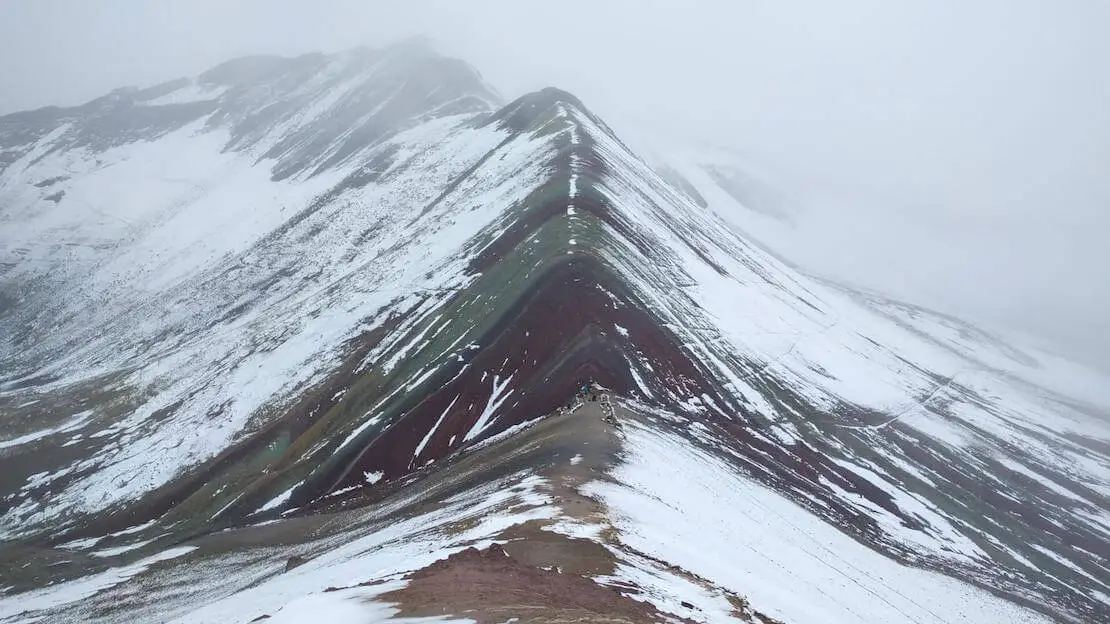
Rainbow mountains covered with snow.
How to reach Cusco?
There are plenty of bus connections from major Peruvian cities. From Lima it is 24 hours, Puno 6-8 hours, Arequipa 10 hours, Nazca 14-16 hours, Copacabana 9-12 hours, La Paz 12-15 hours. From Lima I suggest you take a look at flights. It is often possible to fly for 30-40 euros one way.
Where to sleep in Cusco?
Xplora Hostel Cusco is a good compromise between budget and quality but not so close to the center. Another good option is Gringo’s Wasi. If you are looking for a party hostel then Loki and Wild Rover are the best options. I have seen both and I have to say that Wild Rover is really cool, the hostel is brand new and it is in a really amazing location.
Puerto Maldonado
The town itself isn’t particularly attractive, characterized by a constant hot and humid climate. However, it serves as an excellent base for exploring the Amazon rainforest and is easily accessible by overnight bus from Cusco, making it a more convenient option than the better-known Iquitos for accessing the Amazon.
There are numerous tours and lodges available, catering to various budgets. While I won’t delve into all the options, I’ll briefly share my experience.
After conducting my research, I settled on Lake Sandoval as the ideal destination. The lake is renowned for its diverse wildlife and is conveniently close to the town, which helps keep transportation costs lower compared to other areas. It’s particularly notable for being home to a family of giant otters, a rare species that I had the opportunity to see!
After asking around, I found the agency that operates Sandoval Lodge. Through negotiation, I secured a 3-day, two-night tour for $110 instead of the advertised $170, likely due to it being low season.
I was genuinely satisfied with my experience: the food was good, the private room spacious and clean, and the activities engaging. Alejandro, my guide, was friendly, helpful, and very professional.
While there are many options to explore, I found my choice to be quite satisfying overall. Some other options in the area are: Jungle Pro, Inkaterra and Chuncho Lodge.
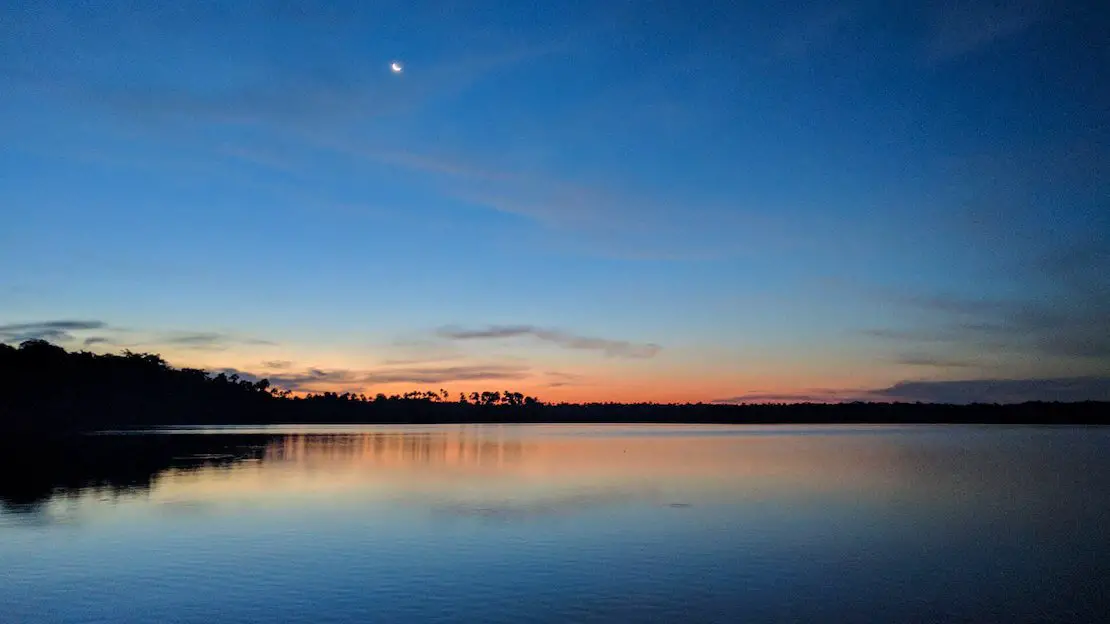
Lake Sandoval.
Where to sleep in Puerto Maldonado?
Tambopata Hostel is really nice and also seems to be the only option in town in case you want a hostel atmosphere and not just a place to sleep.
How to reach Puerto Maldonado?
From Cusco it is about 10 hours by bus and thus a very good route for an overnight bus.
Arequipa
Arequipa, which was also the capital of Peru from 1835 to 1883, is still the second most important city in the country after Lima and the second most visited after Cusco.
Nicknamed the “ciudad blanca” because of the many buildings constructed of a white stone of volcanic origin (the city is surrounded by 3 volcanoes), it is in my opinion the most beautiful city in Peru. At 2380 meters above sea level it offers a particularly pleasant climate throughout the year.
What to do and see in Arequipa
Visit the historic center
The historic center consists of 5 blocks and is easily explored on foot. Some of the main attractions are: Plaza de Armas (Google Maps), the San Camilo market (Google Maps), the Yanahuar mirador (Google Maps), the Museo Santuarios Andinos (Google Maps) where you can see the mummy Juanita, and the Convento de Santa Catalina (Google Maps) which is often referred to as a city within a city.
As always, I recommend joining a free walking tour.

Mirador Yanahuar.
El misti and Chanchani
El misti and Chanchani are two of the three volcanoes that dominate the city. Theoretically, it is possible to “climb” both independently without any kind of permit by reaching the beginning of the trails via public transportation.
I haven’t done it, but a close friend climbed Chanchani solo and without crampons (it is considered one of the easiest 6000 in the world but since the summit is perpetually frozen/snowy it is highly advisable to have the proper equipment) in any case I do not recommend it doing it solo. Guide prices are about 300 Soles for El misti and 450 Soles for Chanchani.
The Colca Canyon
This in my opinion is the main reason to visit Arequipa. The Colca Canyon is an area of absolute beauty and the main attraction is the canyon that reaches a depth of 3140 meters making it one of the deepest in the world. The area and the canyon in particular is also famous for the presence of condors.
It’s possible to visit the canyon in a day, but if you have the time, I highly recommend a 2-night, 3-day trek. While many people opt for an agency tour, I personally do not recommend it—not so much because of the price, but for the freedom it allows you to do as you wish, especially visiting places like the hot springs at Llahuar Lodge, which most of the organized tours do not include.
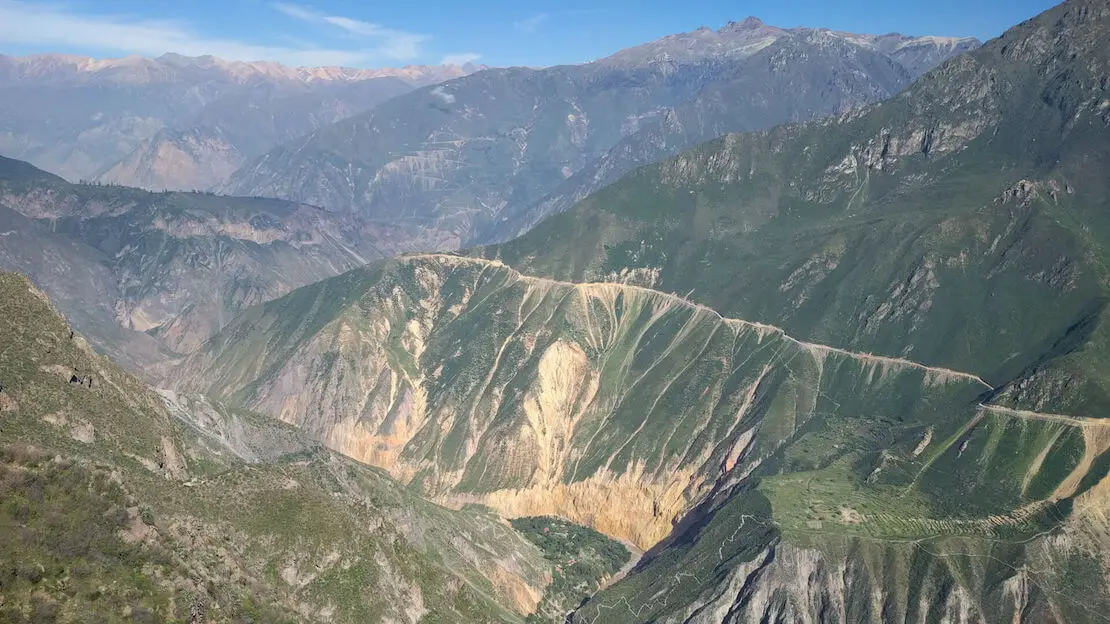
Canyon del Colca.
Colca Canyon DIY Itinerary
The following itinerary avoids the crazy 3 a.m. departure but forces you to spend the night in Cabanaconde which for those with limited time could be a problem, in which case there is no solution, wake up in the middle of the night and take the 3:00 bus. My advice is to take the 11:00 bus so that you arrive in the late afternoon (5-6 hours) in Cabanaconde. You can find a table with the various times here.
The trails are easy to follow and there are often signs with directions. I recommend, again, downloading organic maps to avoid problems.
Day 1 Cabanaconde -> San Galle
First of all, If you want to go to see the condors at Cruz del Condor (Google Maps) then take the 6:30 a.m. camioneta and return to Cabanaconde on the 9:30 a.m. bus (there might be some truck/bus that goes by earlier). Once back in Cabanaconde you have two options:
- Go straight down to St. Galle (about 2 hours) and spend the day lounging by the pool of one of the 4 available accommodations.
- Go to San Juan de Cuccho and Malata and then go down to San Galle (about 5-6 hours) and arrive late afternoon.
These are the lodges in San Galle: Sangalle Cielo Lodge, Eden Lodge, Oasis Paraiso Ecolodge and Tropical Lodge.
Day 2 San Galle-> Llahuar Lodge
Go up the canyon and walk along the road, at one point you will pass through a small village. Once you get back down to the bottom of the canyon and cross the bridge, enjoy a couple of hours of well-deserved relaxation at the thermal water pools.
The lodging provided are small huts. And delicious vegetarian meals cost. The place is a paradise. Llahuar Lodge.
Day 3 Llahuar Lodge -> Cabanaconde
Ideally, you should leave the lodge around 6 so that you can catch the 11:00 bus but there is always the option of catching the later one.
The whole thing is extremely simple and in my opinion a tour is really unnecessary. Take a look at the map just to get an idea of where all the places are and rely on organic maps in case you need it.
To access the entire Colca Canyon area you have to pay a Boleto Turístico (70 soles), from what I understand this money is almost exclusively collected at the Cruz del Condor which is a regular stop on all tours but there may be attendants along the trails as well. Since I did not go there (yes I still saw condors but it is pretty much guaranteed at the view point) I ended up not paying. There are no atms in Cabanaconde or even in the villages along the road so bring enough cash with you from Arequipa.
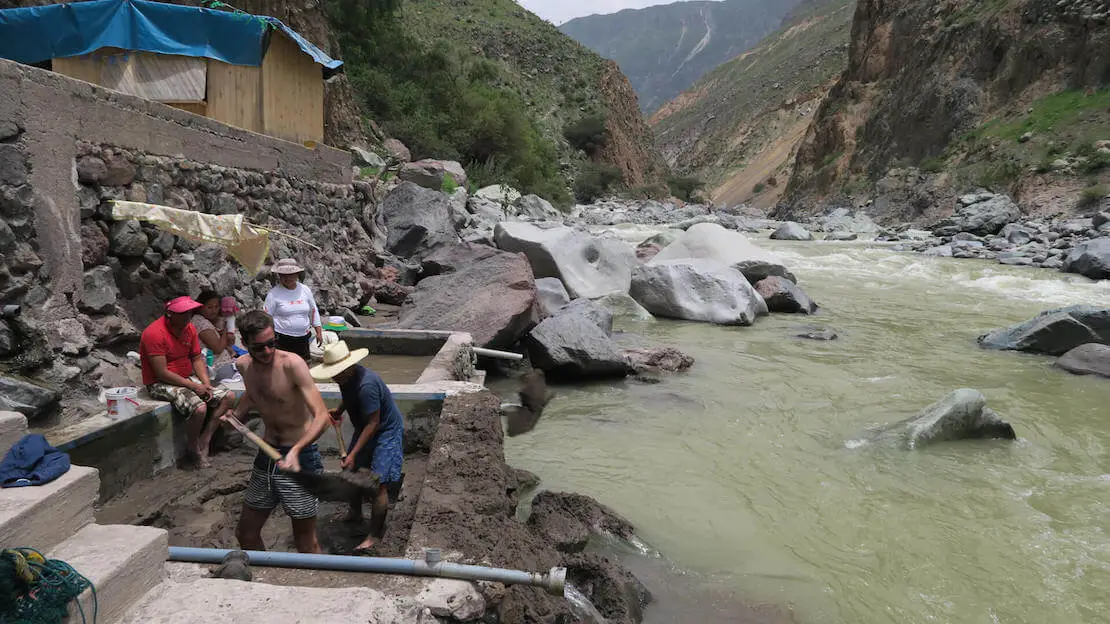
Me helping to clean up the submerged lower pools during the rainy season.
Where to sleep in Arequipa?
Friendly AQP is really cheap, breakfast is included and it is not too far from downtown. The staff is really friendly. For those looking for a party hostel I recommend Wild Rover.
How to get to Arequipa?
From Puerto Maldonado I found a bus-cama for 30 soles, 14 to 15 hours. There are 3 companies and they all leave in the afternoon. From Cusco and Ica there are several night buses. From Puno it is about 6 hours.
Puno
Puno is a city located on the shores of Lake Titicaca at 3800 meters. I passed through without stopping as I was headed to Copacabana in Bolivia and would have had a chance to visit the famous lake from there.
In any case, the main attraction is the Uros floating islands, which have been described to me by some as absolutely “fake” and still exist for tourist purposes only (a bit like the Huacachina oasis) but I’m sure it could be an interesting experience.
I refer you to this article where a tour of the islands is recounted in detail.
How to reach Puno?
From Cusco and Arequipa there are buses very frequently, it takes about 6 hours.
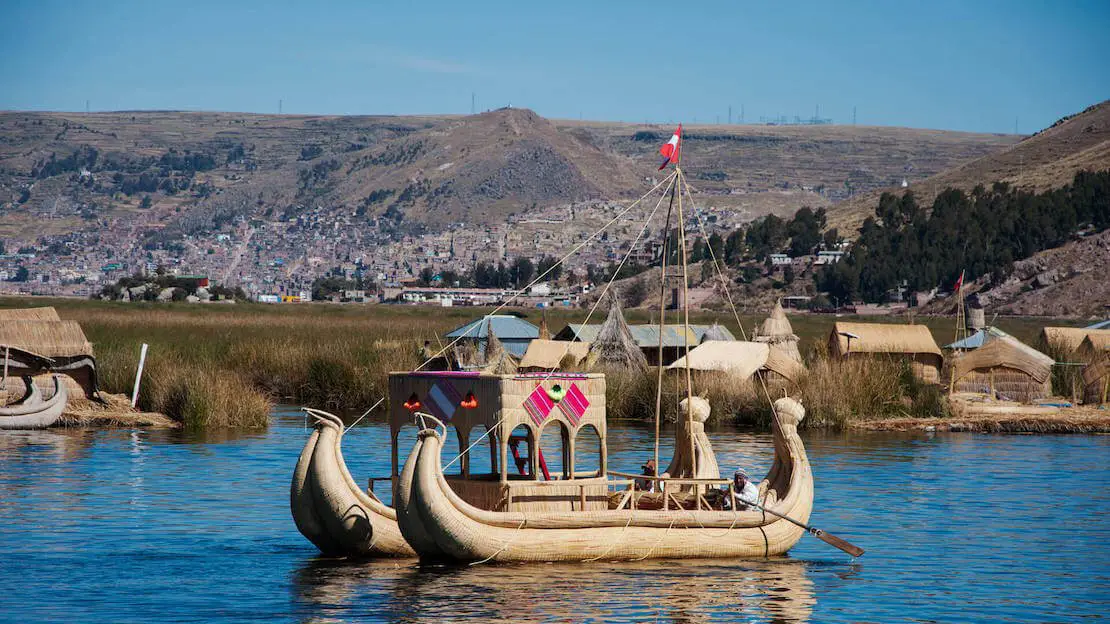
Uros Islands on Lake Titicaca.
All destinations in North Lima
Huaraz
Huaraz is considered the Peruvian trekking capital. It is located at 3100 m altitude so if you are coming directly from Lima give yourself a day or two before doing any trekking. Remember that as mentioned at the beginning of the guide, in the Andes the rainy season is from December to March, while the dry season is from June to September.
I was there in January and it rained punctually every day in the afternoon but I still got to do day hikes. Try to leave early in the morning, for multi-day treks in a tent it is certainly not ideal.
What to do and see in Huaraz
There are literally hundreds of treks/hikes to do in the area but I want to list some of the most popular ones to do in the day.
Laguna 69
This glacial lake is literally a gem in the heart of the Cordillera Blanca and one of the most beautiful things I have seen. As you know by now I usually advise against tours but this is one of the rare cases where the tour is actually far more convenient than public transportation.
The tour costs about 40 soles, this includes transportation and a guide (who closes the group and everyone is free to climb at their own pace as the trail is extremely easy to follow). You leave around 5:30 and normally stop for breakfast on the way to arrive at the trailhead about 3 hours later.
The ascent is about 2-3 hours, the lagoon is at 4950m so if you are not acclimatized and in decent shape it can be really tough, once you get there enjoy your picnic lunch and the beautiful views, some even go swimming! The descent is of course much quicker, and barring delays you will leave around 3 pm to be in Huaraz at 6 pm. All Trails.
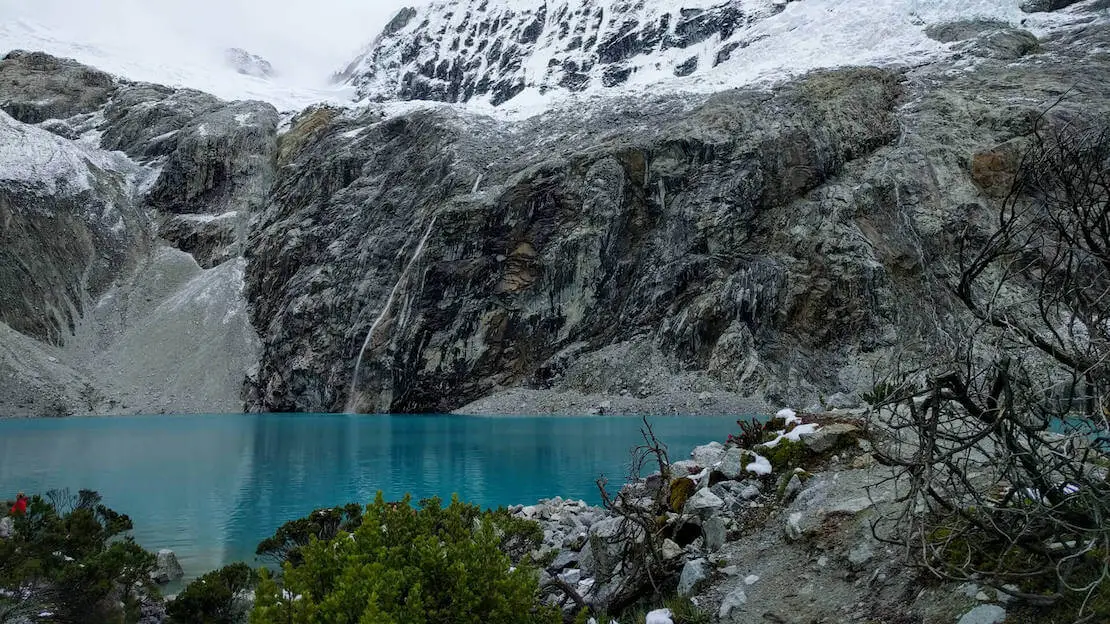
Laguna 69, Huaraz.
Laguna Churup
Take a minivan to the town called Llupa, the cost is 20 soles for a return ticket (Google Maps). Check out the reviews for the updated timetable.
The trail climbs from 3800 to 4500 meters for about an hour and a half/two (All Trails). The trail is not particularly challenging but after you get to the waterfall just below the lagoon there is a piece of “climbing” to do, there are metal ropes to help you and personally I don’t think any special skills are required but it could obviously be challenging for some.
After about 10 minutes you will see the lagoon. The view of the lagoon with the mountains behind is really beautiful.
Entrance to the national park is 10 soles to be paid at the trailhead.
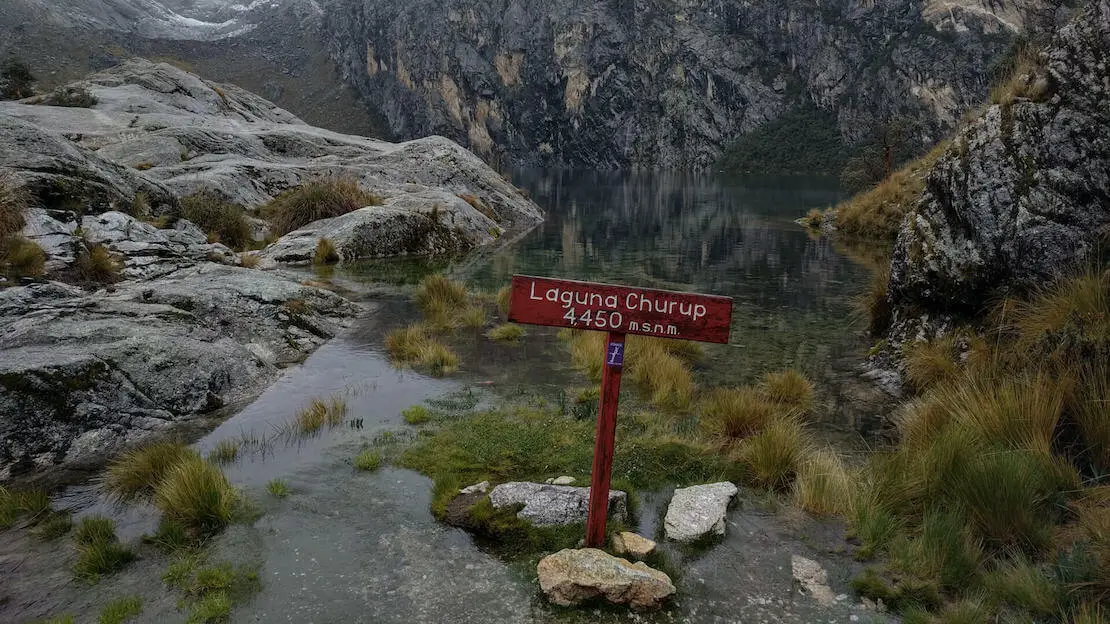
Laguna Churup, Huaraz.
Laguna de Aguak
I will preface this by saying that I barely had the pleasure of seeing the lagoon since the fog was so thick when I arrived. However, after asking two friends who were luckier than me and seeing their photos, I believe the other two deserve more attention.
To get there, take a minivan to Wilcahuaín for 2.5 soles (Google Maps). Inform the driver that you want to go to Laguna de Aguak, and you will be dropped off practically at the beginning of the trail. The ascent, which takes about 3-4 hours, is more challenging than the hikes to the other two lagoons (All Trails).
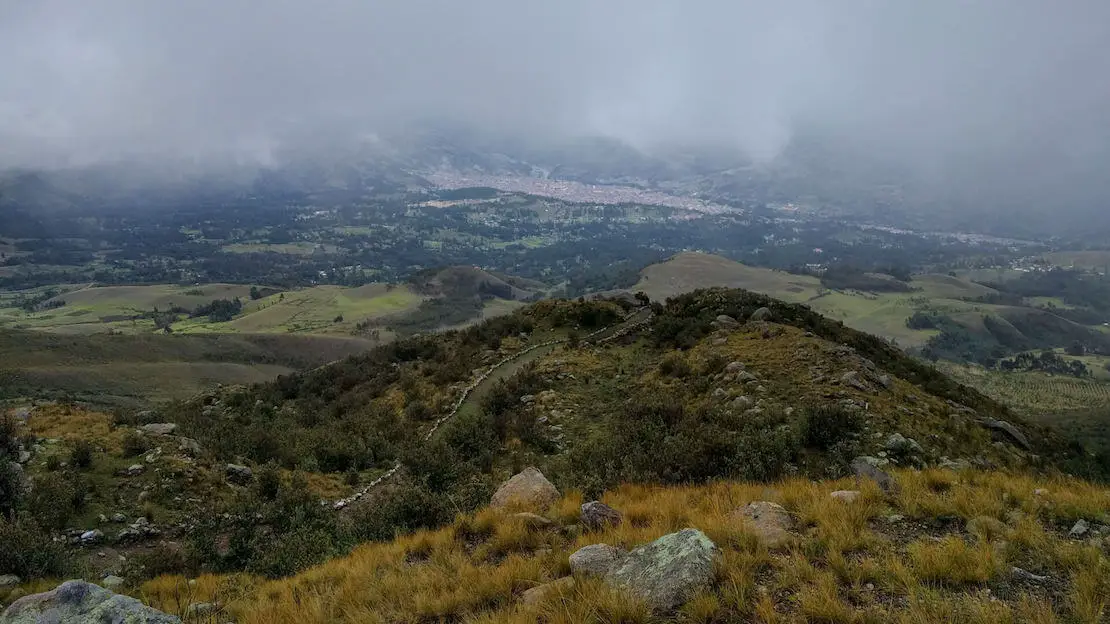
The trail to Laguna de Aguak with Huaraz in the background.
Pastoruri Glacier
Pastoruri Glacier is one of the few remaining tropical glaciers and can be easily reached by a tour from Huaraz. The minibus ride takes about 3 hours, followed by a brief one-hour walk (All Trails).
Although I haven’t been there myself, many people have told me it’s worth the visit. I recommend it especially to those who do not particularly enjoy hiking but still want to experience these fantastic landscapes.
Santa Cruz Trek
Another extremely popular trek to do with or without a tour (you can rent camping equipment in Huaraz) is the Santa Cruz trek. It is considered one of the most beautiful treks in the world. However, after much thought, I decided not to do it as I was in Huaraz in January during the rainy season. Some friends did it in early February and returned tired and demoralized due to the heavy rain that falls daily during this period. In this article, you will find a detailed description of the Santa Cruz trek.
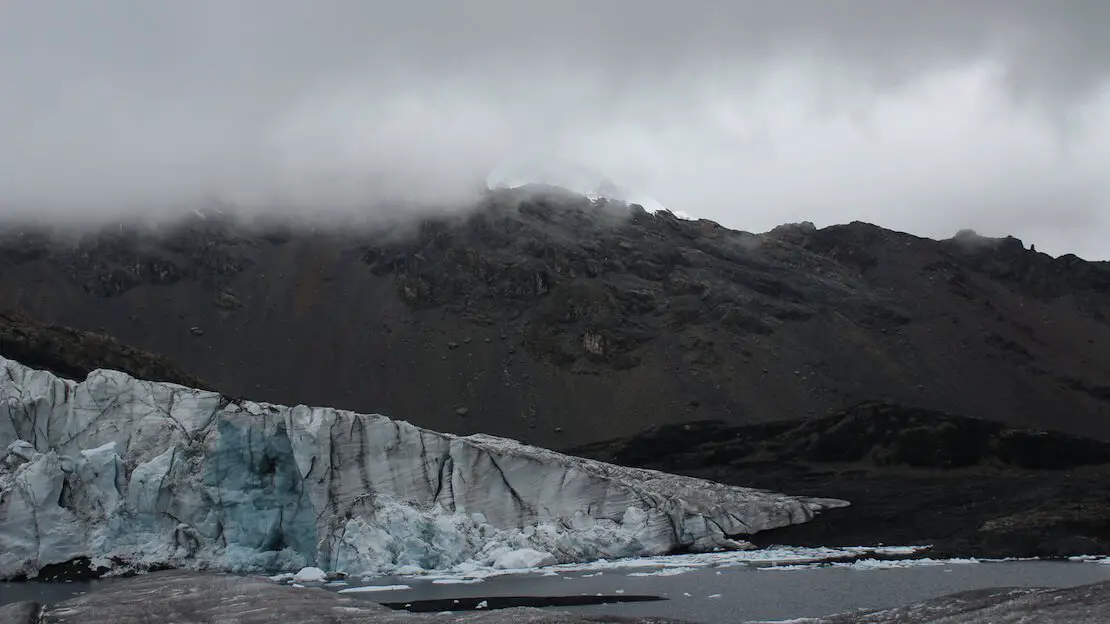
Pastoruri Glacier.
Where to sleep in Huaraz?
I slept at Vacahouse, the furnishings are a bit old but the place is clean and cheap, the staff is really nice.
How to reach Huaraz?
From Lima, it takes about 8 hours to reach Huaraz. It is also about 8 hours from Trujillo. If traveling by day, you might have to first go to Chimbote (about 2 hours).
Trujillo
Trujillo is a fairly large town in northern Peru, primarily used as a base for exploring the many archaeological sites in the valley. There are over 3,000 of these sites, dating back to the Chimu culture and other civilizations present before the arrival of the Spanish.
I did not get a chance to see the city itself and preferred to stay in Huanchaco, a small seaside town a short distance from Trujillo. This is a common choice and one that I recommend. Huanchaco is easily accessible by the frequently shuttled minivans, costing 2 soles.
What to do and see in Huanchaco
As mentioned above, I recommend staying in Huanchaco but what you read is also easily done from Trujillo given the short distance separating the two cities.
The ruins of Chan Chan
Many centuries ago Chan Chan (Google Maps) was the largest city on the entire American continent, capital of the Chimu civilization until it was invaded and later abandoned by the Incas in the 15th century.
The ruins are located halfway between Trujillo and Huanchaco so just take one of the many collectivos that goes back and forth to reach them. Ask to be dropped off “entrada para Chan Chan.” The ruins are located down the road (hard to miss).
Collectivo should cost 1 sol while entry costs 10 soles.
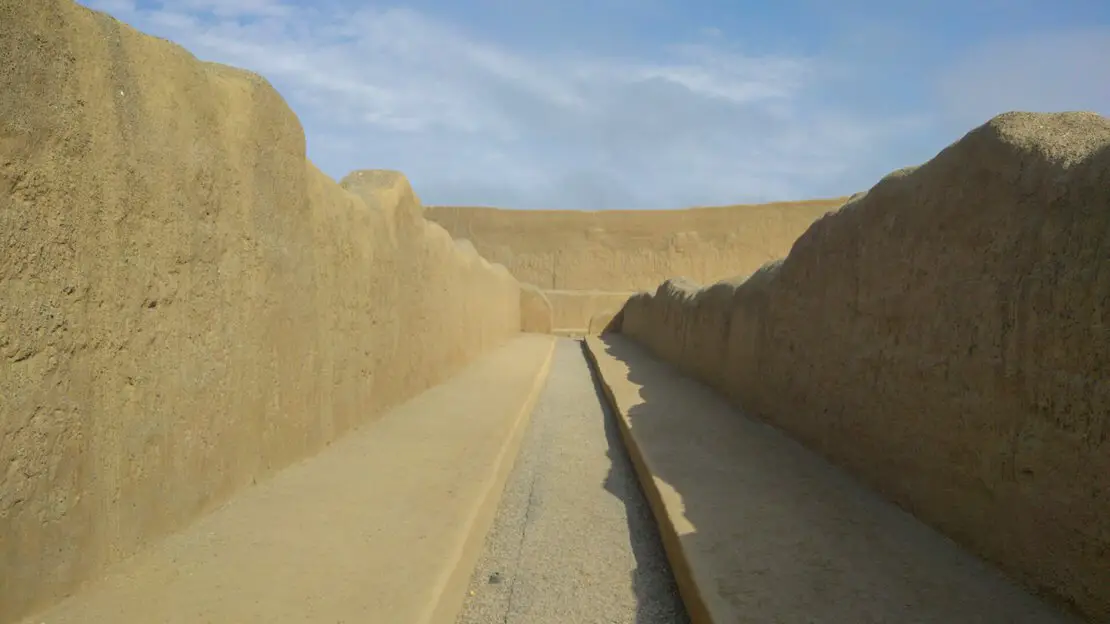
Chan Chan ruins.
Surf
The whole area is quite popular with surfers, and conditions seem to be good even for beginners, so much so that surf schools are numerous and even hostels often offer board and wetsuit rentals.
Huaca de la Luna (moon temple)
The site is located about 4 km from Trujillo (Google Maps) and is a large structure that, along with the Sun Temple, was part of an ancient Moche city known as “Cerro Blanco” by modern archaeologists. The site is well preserved, having been buried in sand for years. The main attraction is a large wall decorated with carvings and colorful designs.
Unfortunately, I have not had the pleasure of visiting the site, but here are directions to reach it by public transportation:
From downtown Trujillo, take the collectivo that says “Campiña de Moche / Mochica Chimu” for 1.50 soles at the corner of Huayna Capac and Suárez on Avenida Los Incas near the Mercado Mayorista. Given the short distance, a taxi should not be too expensive, especially if shared.
Admission to the site is 10 soles and includes a guided tour in English or Spanish. To enter the museum, you need to pay an additional 5 soles.
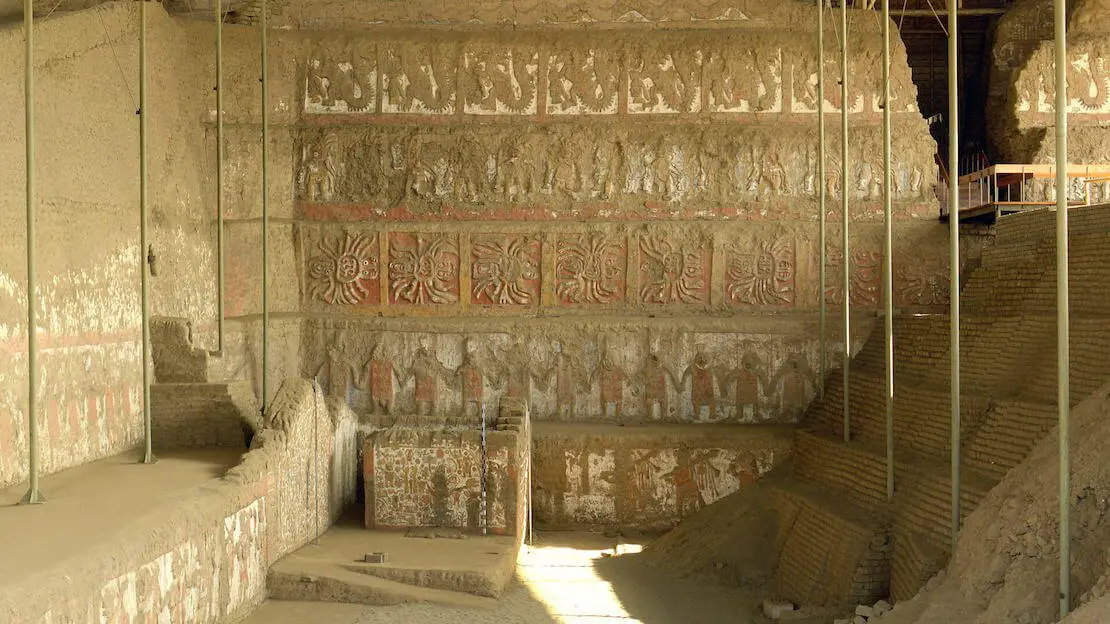
Huaca de la Luna (moon temple).
Where to sleep in Huanchaco?
I stayed at Wachaque Surf and I would recommend it. The rooftop terrace is fantastic and the owner is really nice. A really good hostel is ATMA Hostel & Yoga.
How to reach Trujillo/Huanchaco?
To reach Huanchaco one must always pass through Trujillo, which being along the Panamerica is easily reached by direct buses from many cities in Peru, including Chimbote, Huraraz and Lima to the south, Chiclayo, Piura, Mancora and Tumbes (border with Ecuador to the north). Cajamarca and Chachapoyas to the east.
Cajamarca
Cajamarca is definitely out of the way for those who have little time to spend in Peru, but if you are coming from Ecuador, or have quite a bit of time to spend in the country, then it is definitely worth including in your itinerary.
What to do and see in Cajamarca
Cumbe Mayo
This is a pre-Columbian aqueduct built around 1000a.c. to bring water during the dry season from the mountains to the city of Cajamarca. You can go on a tour from the city, alternatively you can reach the site by taking a collectivo near Santa Apolonia (Google Maps) for 5 soles asking the driver to be dropped off at Cumbe Mayo. The scenic trip takes about an hour. Entrance to the site also costs 5 soles (Google Maps).
Ventanillas de Otuzco
The Ventanillas de Otuzco (Google Maps) are necropolises dating back to pre-Columbian times. They are easily accessible by collectivo from Cajamarca at a cost of 1-2 soles; entry costs 5 soles.
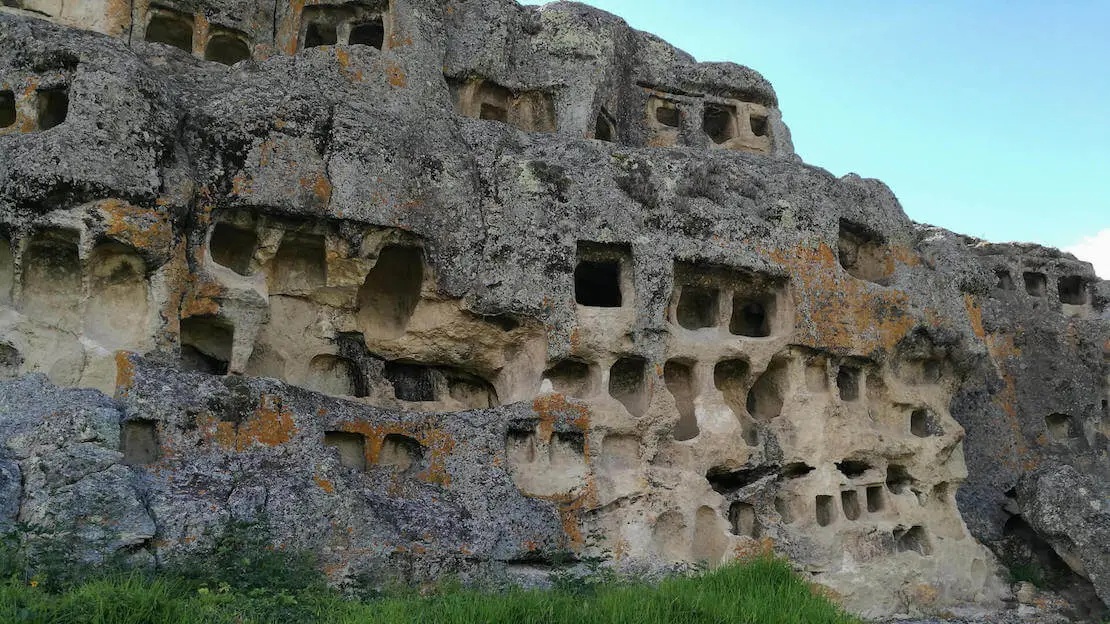
Ventanillas de Otuzco.
How to reach Cajamarca?
There are several buses a day from Trujillo, about 7-8 hours. To reach Chachapoyas one must first go through Celendin. To the north there are connections to Piura and Chiclayo.
Where to sleep in Cajamarca?
There are several cheap guesthouses in town. If you want to book something online, check out Hotel Los Gladiolos and La Pascana Hospedaje.
Chachapoyas
Chachapoyas is a town in the Amazon region of Peru and is used as a base for exploring some nearby sites. The area is not very touristy and in all likelihood you will not meet many backpackers, as opposed to southern Peru.
What to do and see in Chachapoyas
Kuelap
It is an ancient fortress with walls reaching 12 meters high. It housed up to 3,000 people inside. It is the largest ruins in South America dating back to pre-inca times. It is possible to reach the fortress in three ways:
- Via a cable car from Nuevo Tingo, 30 minutes, 20 soles then walk about a kilometer uphill (15-20 minutes) before reaching the fortress proper (Google Maps).
- By joining a tour costing about 80 soles that includes transportation, cable car, entry, guide and lunch.
- Walking from Tingo Viejo reachable by colectivo 6-7 soles, about an hour. Collectivos leave from the bus terminal on Calle Triunfo (Google Maps). The trail starts near the bridge and is well marked. It is about 9 km and 1200 meters of elevation gain, 3-5 hours to climb, 2-3 hours to descend (Google Maps).
Admission to the site costs 20 soles.
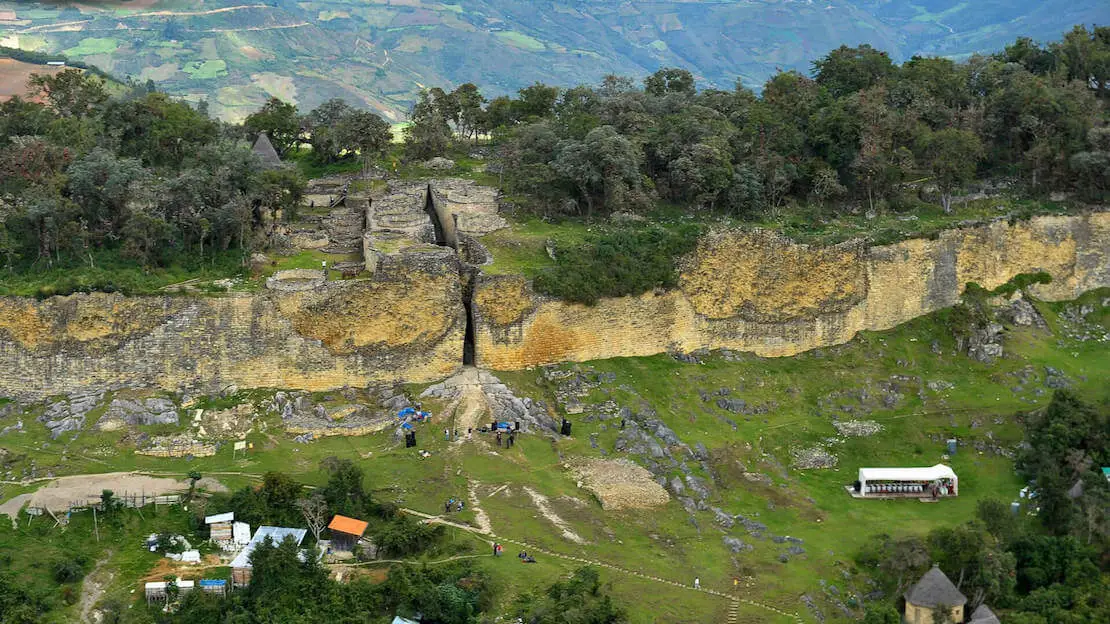
Aerial image of Kuelap.
Yumbilla Waterfall
The waterfall (Google Maps) is located within the so-called “forest of giant waterfalls,” officially measured in 2007, reaching 895.4 meters in height making it the third highest in the world. It can be reached by taking a day trip (leaving early) by public transportation by doing the following: take a collectivo to Pedro Ruiz, about an hour, 5 soles, then take a mototaxi to Cruispes 25 minutes, 15-20 soles, once you get to the main plaza it will be easy to be pointed in the right direction.
Admission costs 10 soles.
Carajia
They are anthropomorphic sarcophagi (Google Maps) built on the slopes of a rock face that can be reached at the end of a short, well-marked trail (about 20-30 minutes) starting from the village of Cruz Pata.
To reach Cruz Pata from Chachapoyas take a collectivo to Luya from the bus terminal (5 soles, 50 minutes) and then a collectivo to Cruz Pata (6 soles, 40 minutes).
Admission to the site costs 5 soles.
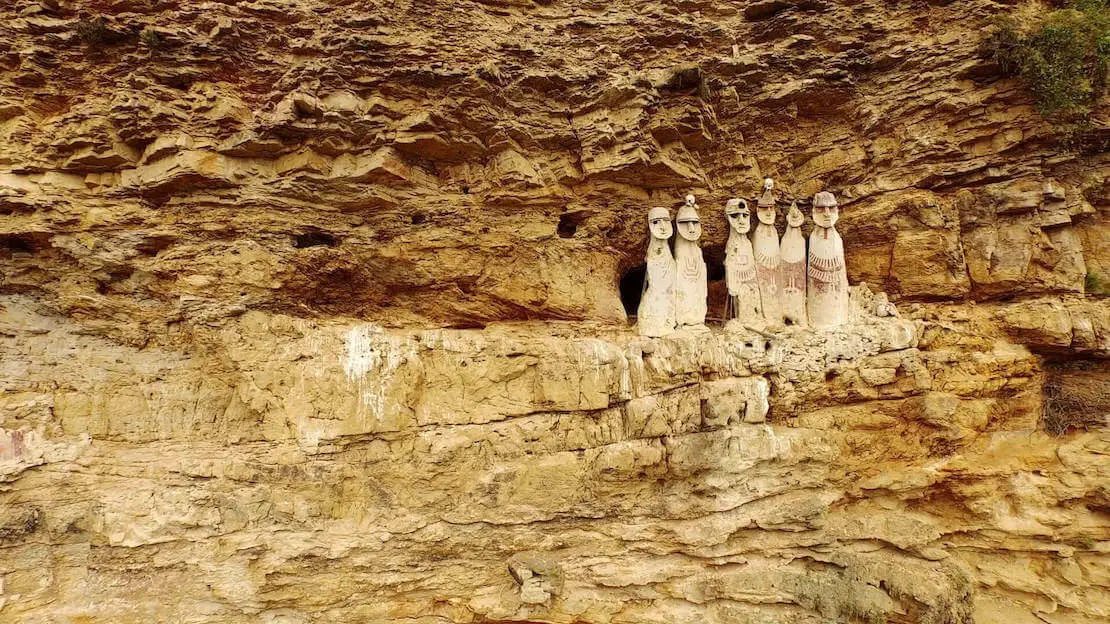
Anthropomorphic sarcophagi in Chachapoyas.
Where to sleep in Chachapoyas?
Aventura Chachapoyas Backpackers cheap, clean and close to downtown. If you are looking for something nicer, check out Chachapoyas Backpackers Hostal Boutique.
How to reach Chachapoyas?
There are night buses from Trujillo and Chiclayo that arrive in Chachapoyas early in the morning. There are also buses from Lima but the trip is really long (about 22 hours). From Mancora there are frequent buses to Chiclayo (7 hours). From Cajamarca it is about 10 hours.
Iquitos
Iquitos is the largest city in the world that cannot be reached by land and is commonly used by tourists as a starting point for exploring the Amazon rainforest, particularly the Pacaya-Samiria Reserve. It is also possible to sail down the Amazon River to Manaus from Iquitos.
In recent years, Iquitos has attracted many tourists interested in shamanic rituals, especially Ayahuasca ceremonies. Ayahuasca is a psychedelic infusion made from various Amazonian plants that can induce powerful hallucinogenic and purgative effects. Its use has long been associated with magical and therapeutic properties.
As mentioned earlier, I decided to visit the Amazon rainforest in Puerto Maldonado for simplicity and convenience, so I don’t have firsthand experience in Iquitos. However, based on my research, tours in Iquitos typically start at about 150 soles per day for one or more days.
For more detailed information about what to expect from Iquitos and how to get there, you can refer to this article.
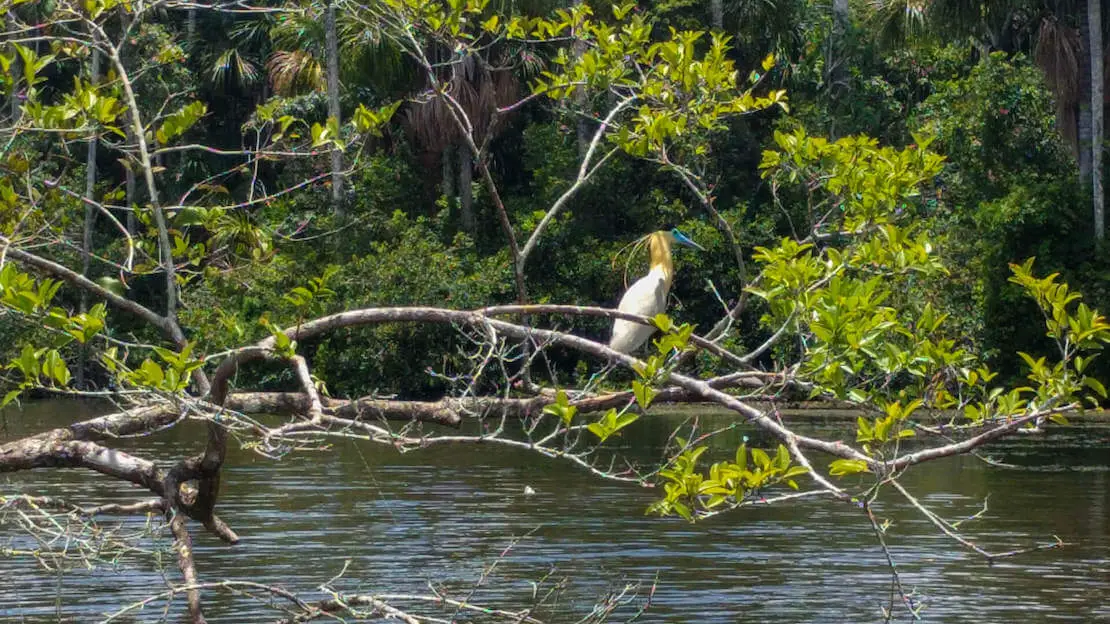
Heron in the Peruvian Amazon rainforest.
Mancora
Coming from Ecuador, this is the first stop for many backpackers. It is a small town by the sea that over the years has turned into the classic party town that every backpacker destination country has.
My interest in this type of destination has never been high. Moreover, I had been to Montanita recently so I preferred to skip it. In any case here besides lots of partying the conditions for surfing seem to be good, in case you are interested!
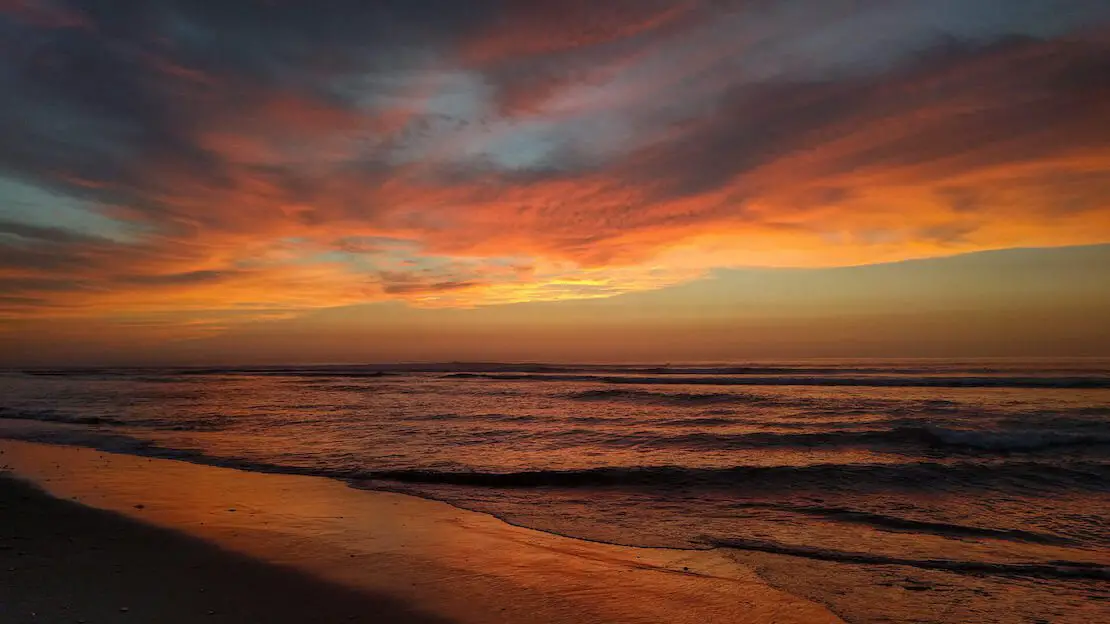
Sunset along the Peruvian coast.
If you found this article helpful, please consider purchasing your travel insurance through one of the links on this site, doing so supports my work at no additional cost to you. For EU & UK Residents, i recommend True Traveller. For everyone else i recommend HeyMondo (5% discount). Thanks!
Suggested Itineraries in Peru
Below I list possible 2, 3 and 4 week itineraries. Obviously there is no perfect itinerary given a time frame, so take what follows as inspiration and modify the itinerary according to your interests/budget!
2-week itinerary in Peru
This itinerary is designed for a low-cost two-week trip to Peru, aiming to avoid excessive travel between destinations and to optimize your time. Given the limited duration, I highly recommend focusing solely on Southern Peru.
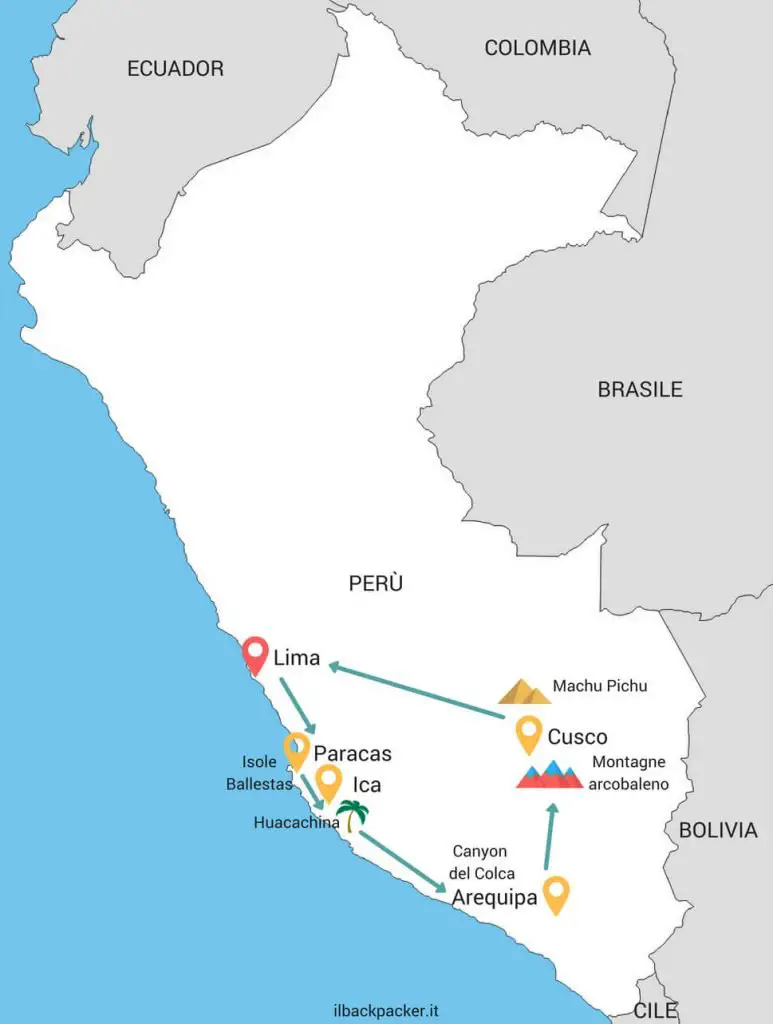
Lima (2 nights)
Spend the first two days recovering from jet lag and exploring the city. On the third day go to Paracas where you will spend the night.
Paracas (1 night)
After finishing the tour to the Paracas Reserve and Ballestas Islands go to Huacachina where you will spend the night.
Huacachina (1 night)
Spend the morning at the oasis and participate in the dune tour/sandboarding in the afternoon then take the overnight bus to Arequipa.
Arequipa (1 night / Colca Canyon 3 nights)
Explore the city on the first day and then trek the Colca Canyon as previously described. Take an overnight bus to Cusco on the fourth day.
Cusco(5 nights)
Day 1: Explore the city
Day 2: Rainbow Mountains
Day 3: DIY sacred valley
Day 4-5: Machu Picchu
Lima (1 night)
This part of the itinerary depends largely on your return flight. Theoretically, you could return the same day without having to spend the night in Lima. For all other travel, I recommend taking buses. However, for the Cusco-Lima route, consider flights, as the bus journey takes a minimum of 22 hours and doesn’t save much money.
This is the itinerary I recommend for those with limited time and money. Visiting the Nazca Lines, Puno, and participating in some trekking in Machu Picchu is definitely doable by cutting out the DIY trek of Colca Canyon, for example.
3-week itinerary in Peru
With three weeks to spare, I still recommend focusing on the south of the country, following the two-week itinerary, and perhaps adding a tour of the Amazon rainforest in Puerto Maldonado and a couple of days in Puno on Lake Titicaca. Alternatively, if you like hiking, consider heading north to Huaraz, which is only an 8-hour bus ride from Lima.

Itinerary for 4 Weeks or More in Peru
Four weeks is enough time to explore even northern Peru thoroughly. If you are arriving from Ecuador to the north or Bolivia to the south, then crossing Peru from north to south or vice versa is the best choice. If, on the other hand, you have Lima as your point of arrival and departure, my advice is to complete the 2-3 week itinerary and then take a Cusco – Cajamarca flight (if booked in advance, it costs about 50-100€) and then travel down to Lima by bus.
How to get around Peru
Buses in Peru
The bus and collectivos network is extremely efficient and makes it possible to reach any destination quite simply with the right planning. The only real problem with the bus network is that unlike other South American countries, where there is a single bus terminal from where all companies depart, in Peru especially in the big cities each company tends to have its own terminal and they are not always close to each other, which is sometimes really frustrating.
For those seeking luxury, the best bus company is undoubtedly Cruz del Sur. Meals are provided on board and the “first class” cama service provides rows of 3 seats instead of 4, and is thus much more comfortable and spacious. Each seat also has its own entertainment screen. Obviously it is more expensive than other companies but still cheap by European standards.
Update: They’ve introduced a new pricing system, and essentially, the closer you sit to the toilets on the top row, the cheaper the tickets. In fact, if you sit right at the back, seats are a third cheaper than PeruBus which is also a very good company.
Another extremely popular company that works almost exclusively with tourists is Peru Hop, similar to an interail, it allows you to pay for a pass that allows you to move whenever you want within a given itinerary with “pick up” at your hostel/hotel. This company also operates in Bolivia under the name Bolivia Hop and allows you to buy passes valid for both countries. Of course, the service offered, while convenient and efficient, is much more expensive than local buses.
To compare prices of the major Peruvian bus companies you can take a look at redbu.pe but as always I recommend buying your ticket directly at the terminal to get the best rates.
Taxis in Peru
Taxis in Peru do not use taximeters, so it’s important to agree on the price before you begin your journey to avoid surprises and potential disputes. You can ask the staff at your hotel or hostel for the correct fare for a specific route.
In large cities, be cautious of unofficial cabs and drivers who might claim that your intended hotel or hostel is closed or full—they often work on commission and may try to take you elsewhere.
Uber is a reliable alternative in Peru, but it currently operates only in Arequipa and Lima.
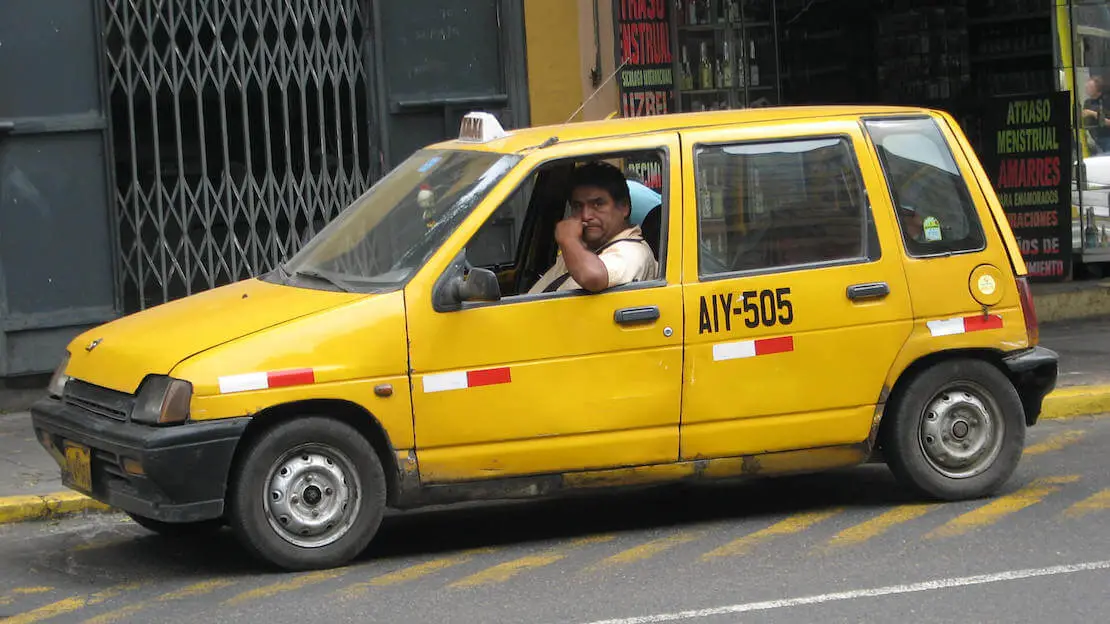
Taxi in Lima.
Domestic flights in Peru
Domestic flights are not extremely expensive and are definitely a good option for those who have little time to visit the country. The companies operating domestic flights are: LC Peru, LATAM Peru, Peruvian, StarPeru, Avianca Peru.
Some companies have different prices based on the currency you pay in so that tourists are charged the most expensive fares. Get smart!
Hitchhiking in Peru
Hitchhiking short distances is quite common in rural areas of Peru, but it’s generally advisable to avoid doing so in cities. If you do receive a ride, it’s courteous to offer some soles as a token of appreciation, as Peru is a country with significant economic challenges and gasoline costs are not insignificant for many people.
Backpacking Peru: costs
In short, how much does a backpacking trip to Peru cost?
Peru is one of the most affordable countries in South America. A budget-conscious backpacker can comfortably get by on about 25-30€ per day. If you enjoy nightlife or prefer a more comfortable travel style (like Flashpacking), budgeting at least 40€ per day would be more appropriate.
Cost of transport in Peru
Transportation in Peru is quite affordable, especially if you’re willing to avoid expensive services and companies like Cruz del Sur and Peru Hop, and instead prefer local companies. Prices with these local companies are often negotiable. Local buses and collectivos generally cost around 5 soles per hour of travel.
Cost of accommodation in Peru
A dorm room can cost 25 to 50 soles per night. Much depends on the city and time of year and, of course, quality of accommodation. For a double room in a hostel, but also in a basic hotel, expect to pay around 100 soles.
Cost of food in Peru
Especially at lunchtime, it’s common to find a menu of the day ranging from 5-10 soles (includes appetizer, first or second course, and a drink) in some comedores or street vendors, though prices can vary depending on the area or city. For slightly more upscale restaurants, expect to pay at least 20 soles.
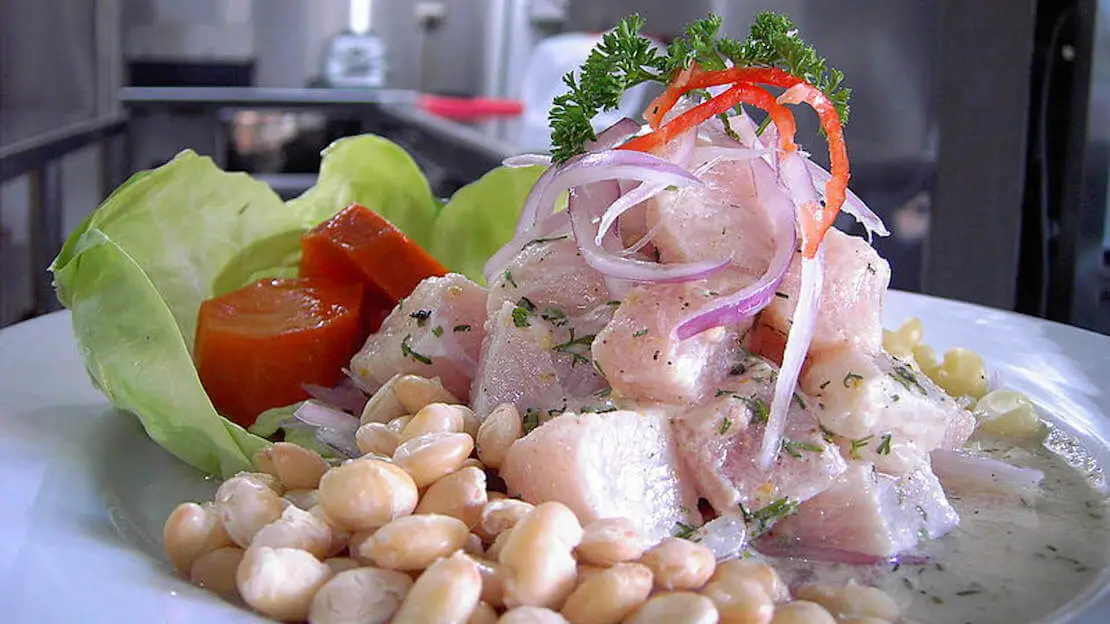
Ceviche.
Cost of Activities in Peru
Visiting Machu Picchu, the Nazca Lines, and taking an Amazon rainforest tour are undoubtedly among the most expensive activities to do in Peru. Other archaeological sites are generally less costly, and many treks and tours can be more affordable, especially if done independently.
Backpacking Peru: safety
Is Peru dangerous? Peru isn’t inherently dangerous, but like any country, some areas should be avoided, particularly certain neighborhoods in Lima that are considered unsafe, especially at night, even by locals.
That being said, most tourist areas are generally safe, and using common sense should help ensure a trouble-free experience. For additional tips on travel safety, you may find this article helpful.
Are you planning a trip to Peru? Check out these posts:
Do you have any questions? Updated information? Feel free to leave a comment or message me on Instagram!
If you found this article helpful, please consider purchasing your travel insurance through one of the links on this site, doing so supports my work at no additional cost to you. For EU & UK Residents, i recommend True Traveller. For everyone else i recommend HeyMondo (5% discount). Thanks!
For donations/pizzas and virtual beers 🙂
Did you like the post? Pin it!
